Risultati: 28
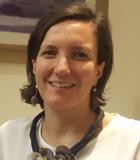
Funzione/Ruolo
Co-founder MIPU
Percorso professionale
Giulia Baccarin, classe 1981, si laurea con lode in Ingegneria Biomedica al Politecnico di Milano. Fin dai primi anni 2000 appassionata di modellazione predittiva, trascorre gli inizi della sua carriera professionale in Giappone in una società di consulenza, completando con successo il prestigioso ETP (Executive Training Programme) finanziato dalla Commissione Europea. Nel 2008, rientrata in Italia, fonda la sede italiana della società di ingegneria I-care, oggi leader in Europa nella manutenzione predittiva e dell’affidabilità. Parallelamente, spinta dal forte desiderio di promuovere e supportare lo spirito imprenditoriale di giovani talenti in Italia, ha co-fondato MIPU, un gruppo di imprese che portano l'intelligenza artificiale nella fabbrica.
Risultati scientifici
Le soluzioni sviluppate da MIPU si focalizzano proprio su analitiche predittive dedicate all'ottimizzazione dei processi industriali e sono ricercate da aziende leader in Italia e all'estero. Da oltre due anni Giulia Baccarin, che nel 2016 ha vinto il premio Gamma Donna per l'imprenditoria giovanile e femminile, è attiva nella promozione di una discussione profonda circa il ruolo dell’etica dell’intelligenza artificiale, la diversità nelle comunità di programmazione e la jobless society su prestigiosi palcoscenici come TedXRoma 2017, Wired Trends 2018 e Wired Next Fest 2017, DIGITAL ITALY SUMMIT 2017.
Riconoscimenti e premi
Premio Gamma Donna per l'imprenditoria giovanile e femminile, 2016
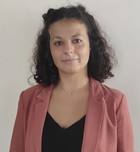
Area STEM: Ingegneria
Competenze: analisi di Big Data, matematica applicata, programmazione in Python, sviluppo di metodi matematici, sviluppo di metodi statistici, sviluppo di modelli di Machine Learning, sviluppo di piattaforme Cloud, sviluppo di strategie di Machine Learning, utilizzo di database relazionali e non, utilizzo di strumenti di Data-Visualization
Parole chiave: analisi dei dati, big data, cloud computing, Data-Driven, intelligenza artificiale, Machine Learning, Natural Language Processing
Regione: Lombardia
Funzione/Ruolo
Lead Data Scientist
Percorso professionale
Dopo la Laurea in Ingegneria Matematica e Statistica Applicata presso il Politecnico di Milano, è entrata come figura di Data Scientist in 3rdPlace, società milanese del gruppo Datrix fondata nel 2010 da ex senior manager di Google, dedicata allo Human Empowerment attraverso l’Intelligenza Artificiale. Oggi è Lead Data Scientist del team di ricerca e sviluppo di 3rdPlace con consolidata esperienza in metodi matematici e statistici, sviluppo di strategie e modelli di Machine Learning e Artificial Intelligence in ambito Big Data e Cloud computing.
Risultati scientifici
Le sue principali aree di ricerca riguardano la modellazione e l’analisi dei dati, lo sviluppo di modelli di Machine Learning e Artificial Intelligence in ogni sua sfumatura: la Computer Vision, il Natural Language Processing, il Forecasting, il Clustering.
Attività editoriali e pubblicazioni
[2021] B Talone, M Bazzarelli, A Schirato, F Dello Vicario, D Viola, E Jacchetti, M Bregonzio, MT Raimondi, G Cerullo, D Polli. Phototoxicity induced in living HeLa cells by focused femtosecond laser pulses: a data-driven approach. Biomed. Opt. Express 12, 7886-7905.
[2019] Manuela Bazzarelli, Milo Manica, Michelangelo Morganti, Daniela Casola, Giuseppe Bogliani. Studio preliminare della fenologia e del successo riproduttivo in una colonia di rondone comune (Apus apus) a Jerago con Orago (VA). DOI 10.13140/RG.2.2.32503.98727.
[2018] José Vicario, Ramon Vilanova, M Bazzarelli, Anna Paganoni, Umberto Spagnolini, Aldo Torrebruno, Miguel Prada, Antonio Morán, Manuel Dominguez, Maria João Pereira, Paulo Alves, Michal Podpora, Marian Barbu. Data mining tool for academic data exploitation: Selection of most suitable algorithms. ERASMUS+ KA2/KA203
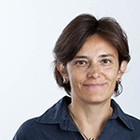
Funzione/Ruolo
Professoressa ordinaria di Sistemi di Elaborazione delle Informazioni al Politecnico di Milano, delegata del rettore per le relazioni internazionali con il Sud Est Asiatico, Vice Coordinatrice del Corso di Dottorato in Ingegneria dell'Informazione presso il Politecnico di Milano.
Percorso professionale
Dopo la laurea in Ingegneria Elettronica al Politecnico di Milano nel 1993, prosegue la sua formazione con un Dottorato di Ricerca in Ingegneria Automatica ed Informatica conseguito nel 1997. Nel 1999 è ricercatrice, nel 2003 è professoressa associata e dal 2014 è professoressa ordinaria di Sistemi di Elaborazione delle Informazioni al Politecnico di Milano. Dal 2016 è vice-coordinatrice per la sezione di informatica del Dottorato in Ingegneria dell'Informazione del Politecnico di Milano e fa parte della giunta di Dipartimento dal 2014. Dal giugno 2017 è delegata del rettore per le Relazioni internazionali con il Sud Est Asiatico.
Risultati scientifici
Il profilo scientifico di Cristiana Bolchini è duplice, avendo iniziato l’attività di ricerca nell’ambito delle architetture di calcolatori, sistemi dedicati e relative metodologie di progetto, e in seguito anche esteso i propri interessi all’area delle basi di dati con particolare riferimento alla gestione dei dati guidata dal contesto.
Più precisamente, l’attività di ricerca si è concentrata sin dall’inizio sugli aspetti di affidabilità dei sistemi di calcolo, dedicati e non, con l’obiettivo di sviluppare metodologie di progetto e di analisi di sistemi in grado di rilevare autonomamente la presenza o l’insorgere di guasti e di mitigarne gli effetti. Queste soluzioni, che in passato erano di interesse prevalentemente per ambiti particolarmente critici (come per esempio lo spazio o la salute), sono oggi particolarmente importanti, considerata la pervasività e la diffusione dei dispositivi elettronici. Per questo motivo, l’affidabilità assume un ruolo importante, insieme alle prestazioni e ai consumi, e la ricerca più recente vuole trovare soluzioni per realizzare sistemi capaci di configurarsi autonomamente e adattare i livelli di questi tre aspetti in relazione al contesto di funzionamento, alla criticità dell’ambito applicativo e ai requisiti. Questi temi sono stati al centro di un progetto di ricerca europeo coordinato da Cristiana Bolchini e conclusosi con successo nell’agosto 2016.
I consumi energetici sono anche al centro delle ricerche nell’ambito della gestione di dati, con riferimento alle problematiche di monitoraggio e controllo degli edifici, per individuare le principali fonti di consumi e per rendere gli utenti maggiormente consapevoli, tematiche di grande interesse nel contesto di una società attenta.
Attività editoriali e pubblicazioni
È co-autrice di circa 140 pubblicazioni scientifiche, tra cui:
[2017] C. Bolchini, A. Geronazzo, E. Quintarelli, Smart buildings: a monitoring and data analysis methodological framework. Elsevier Building and Environment, 121: 93-105.
[2017] M. H. Haghbayan, A. Miele, A. M. Rahmani, P. Liljeberg, A. Jantsch, C. Bolchini, H. Tenhunen, Can Dark Silicon Be Exploited to Prolong System Lifetime?. IEEE Design & Test, 34(2): 51-59.
[2017] C. Bolchini, L. Cassano, A Fully Automated and Configurable Cost-Aware Framework for Adaptive Functional Diagnosis. IEEE Design & Test 34(2): 79-86.
[2016] C. Bolchini, L. Cassano, A Novel Approach to Incremental Functional Diagnosis for Complex Electronic Boards. IEEE Trans. on Computers, 65(1): 42-52.
[2015] C. Bolchini, L. Cassano, P. Garza, E. Quintarelli, F. Salice, An Expert CAD Flow for Incremental Functional Diagnosis of Complex Electronic Boards. IEEE Trans. on Computer Aided Design of Integrated Circuits and Systems, 34(5): 835-848.
[2015] M. Ottavi, S. Pontarelli, D. Gizopoulos, C. Bolchini, M. K. Michael, L. Anghel, M. Baradaran Tahoori, A. M. Paschalis, P. Reviriego, O. Bringmann, V. Izosimov, H. A. R. Manhaeve, C. Strydis, S. Hamdioui, Dependable Multicore Architectures at Nanoscale: The View From Europe. IEEE Design & Test 32(2): 17-28.
[2014] C. Bolchini, C. Sandionigi, Design of Hardened Embedded Systems on Multi-FPGA Platforms. ACM Trans. Design Autom. Electr. Syst. 20(1): 16:1-16:26.
[2013] C. Bolchini, A. Miele, Reliability-Driven System-Level Synthesis for Mixed-Critical Embedded Systems. IEEE Trans. Computers 62(12): 2489-2502.
[2013] C. Bolchini, E. Quintarelli, L. Tanca, CARVE: Context-aware automatic view definition over relational databases. Inf. Syst. 38(1): 45-67.
[2011] C. Bolchini, A. Miele, C. Sandionigi, A Novel Design Methodology for Implementing Reliability-Aware Systems on SRAM-Based FPGAs. IEEE Trans. Computers 60(12): 1744-1758.
[2010] D. Bianchini, S. Montanelli, C. Aiello, R. Baldoni, C. Bolchini, S. Bonomi, S. Castano, T. Catarci, V. De Antonellis, A. Ferrara, M. Melchiori, E. Quintarelli, M. Scannapieco, F. A. Schreiber, L. Tanca, Emergent Semantics and Cooperation in Multi-knowledge Communities: the ESTEEM Approach. World Wide Web 13(1-2): 3-31.
[2009] C. Bolchini, C. Curino, G. Orsi, E. Quintarelli, R. Rossato, F. A. Schreiber, L. Tanca, And what can context do for data? Commun. ACM 52(11): 136-140.
Riconoscimenti e premi
Cristiana Bolchini ha ricevuto due gift Cisco University Research Program Fund of Silicon Valley Community Foundation per la sua ricerca sulla diagnosi funzionale di circuiti complessi. È stata Associate Editor per le riviste IEEE Transactions on Emerging Topics in Computing e IEEE Transactions on Computers.

Funzione/Ruolo
Professoressa ordinaria di Bioingegneria Elettronica alla Scuola Universitaria Superiore IUSS di Pavia.
Percorso professionale
Laureata in Fisica nel 1991 presso l'Università degli Studi di Genova e Dottoressa di Ricerca in Bioingegneria presso il Politecnico di Milano nel 1996, dedica la sua carriera scientifica allo studio di materiali semiconduttori a base organica con i quali realizzare dispositivi e sistemi elettronici per la sensoristica, con applicazioni che vanno dal monitoraggio di segnali biomedicali con sensori indossabili, ai sensori per la genomica, ai sensori cellulari per drug testing, interfacce cervello-macchina, robotica, agricoltura di precisione. Nel 1996 diventa Ricercatrice in Elettronica presso l’Università degli Studi di Cagliari, dove successivamente diventa Professoressa Associata e poi Ordinaria di Bioingegneria Elettronica. Dal 2015 al 2017, ha ricoperto il ruolo di Prorettrice all’Innovazione e ai rapporti con il Territorio presso l’Università degli Studi di Cagliari. Dal 2014 siede nel consiglio di amministrazione del Centro Ricerche, Sviluppo, Studi Superiori in Sardegna (CRS4). Nel 2017 ne diventa Presidente, prima donna dalla fondazione (1990) a ricoprire questo ruolo che mantiene fino al 2020. Dal 2024 è Professoressa Ordinaria presso la Scuola Universitaria Superiore IUSS di Pavia.
Risultati scientifici
Dal 2001 ha lavorato alla realizzazione di dispositivi elettronici a semiconduttore organico con i quali realizzare sistemi di biomonitoraggio per il corpo umano a varia scala dimensionale (sino alla singola cellula e alla rilevazione di segnali biochimici provenienti da macromolecole biologiche). Il suo gruppo di ricerca è stato tra i primi al mondo a lavorare e pubblicare sullo sviluppo di sensori elettronici su substrati non convenzionali quali carta, plastica, tessuti. Ha realizzato e brevettato un metodo per realizzare fibre e tessuti conduttivi. A partire da questo metodo, con il suo gruppo di ricerca ha realizzato dispositivi e sistemi di biosensing indossabili che comprendono sia dispositivi integrati in indumenti sia sistemi da usare a diretto contatto con la pelle, come tatuaggi elettronici, per la rilevazione di segnali cardiaci, muscolari, e più in generali di biopotenziali generati dal corpo umano o animale. In parallelo, questi stessi sistemi possono essere impiegati per realizzare sensoristica avanzata dedicata al controllo ambientale. È autrice di 12 brevetti internazionali focalizzati sull’utilizzo di dispositivi a semiconduttore organico per il biomonitoraggio. È stata coordinatrice di diversi progetti di ricerca internazionali e nazionali in questo ambito.
Attività editoriali e pubblicazioni
Annalisa Bonfiglio è autrice di più di 200 articoli scientifici su riviste internazionali e atti di conferenze. Di seguito una selezione fra le più recenti:
[2024] G. Casula, S. Lai, E. Loi, L, Moi, P. Zavattari, A. Bonfiglio, “An innovative PCR-free approach for DNA methylation measure: An application for early colorectal cancer detection by means of an organic biosensor”, Sensors and Actuators B: Chemical, Volume 3981 January 2024 Article number 134698, DOI 10.1016/j.snb.2023.134698.
[2023] S. Lai, K. Kumpf, P.C. Ricci, P. Fruhmann, J. Bintinger, A. Bonfiglio, P. Cosseddu, “Isotropic contact patterning to improve reproducibility in organic thin-film transistors”, Organic Electronics, 122, 106887, November 2023.
[2023] A. Mascia, A. Spanu, A. Bonfiglio, P. Cosseddu “Multimodal force and temperature tactile sensor based on a short channel organic transistor with high sensitivity” Scientific Reports Open Access Volume 13, Issue 1December 2023 Article number 16232, DOI 10.1038/s41598-023-43360-y.
[2022] Andrea Spanu, Tommaso Losi, Antonello Mascia, Annalisa Bonfiglio, Mario Caironi, Piero Cosseddu, “Submicrometer-Channel Organic Transistors with MHz Operation Range on Flexible Substrates by a Low-Resolution Fabrication Technique”, Advanced Materials Technologies, 2022, doi: 10.1002/admt.202200891.
[2021] S. Lai, Y. Vlamidis, N. Mishra, P. Cosseddu, V. Mišeikis, P. C. Ricci, V. Voliani, C. Coletti, A. Bonfiglio"A flexible, transparent chemosensor integrating an inkjet-printed organic field-effect transistor and a non-covalently functionalized graphene electrode", Advanced Materials Technologies.
[2021] F.Torricelli, D. Z. Adrahtas, Z. Bao, M. Berggren, F. Biscarini, A. Bonfiglio, C. A. Bortolotti, C. D. Frisbie, E. Macchia, G. G. Malliaras , I. McCulloch, M. Moser, T.- Q. Nguyen, R. M. Owens, A. Salleo, A. Spanu and L. Torsi, “Electrolyte- gated transistors for enhanced performance bioelectronics”, Nature Reviews|Methods Primers ID (2021) 1:66, doi: s43586-021-00065-8.
[2021] A. Spanu, L. Martines, A. Bonfiglio, “Interfacing cells with organic transistors: a review of in vitro and in vivo applications”, Lab on a Chip, 2021, DOI: 10.1039/D0LC01007C.
[2021] A. Spanu, A. Botter, A. Zedda, G. L. Cerone, A. Bonfiglio, D. Pani, “Dynamic surface electromyography using stretchable screen-printed textile electrodes”, IEEE Trans Neural Syst Rehabil Eng. 2021;29:1661-1668. doi: 10.1109/TNSRE.2021.3104972.
[2020] Spanu, A., Colistra, N., Farisello, P., Friz, A., Arellano, N., Rettner, C., Bonfiglio, A., Bozano, L., Martinoia, S., "A Three-Dimensional Micro-Electrode Array for in-vitro neuronal interfacing" , Journal of Neural Engineering, in press (2020): JNE-103422.R2.
[2019] Spanu, A., Tedesco, M., Martinoia, S., Bonfiglio, A., “From MEAs to MOAs: The Next Generation of Bioelectronic Interfaces for Neuronal Cultures”, Advances in Neurobiology 22, pp. 155-167, 2019 10.1007/978-3-030-11135-9_6.
Riconoscimenti e premi
Nel 2016 è insignita del premio Itwiin come "Migliore inventrice Italiana del 2016" dall'Associazione Italiana Donne Inventrici e Innovatrici.
Nel 2017 le viene assegnato il premo Tecnovisionaria dall’Associazione Donne & Tecnologia.
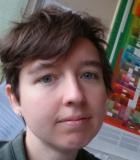
Funzione/Ruolo
Assegnista di Ricerca del CNR-IRPI, Istituto di Ricerca per la Protezione Idrogeologica, sezione di Padova
Percorso professionale
Dopo aver conseguito la laurea triennale in Ingegneria Civile nel 2007 e la laurea specialistica in Ingegneria per l'Ambiente e il Territorio nel 2010 presso l'università di Padova, nello stesso anno entra a far parte dell'Istituto di Ricerca per la Protezione Idrogeologica di Padova come borsista. Sempre nell'Istituto di Ricerca è assegnista di ricerca dal 2013 a oggi e contemporaneamente prosegue la sua formazione con un dottorato di ricerca, conseguito all'Università di Bologna in Ingegneria Civile, Ambientale e dei Materiali nel 2015.
Risultati scientifici
Giulia Bossi è un'esperta di meccanica delle terre e di frane. Si occupa, tra l'altro, di analisi statistica dell'errore associato alle semplificazioni del profilo stratigrafico nel modello numerico di frane; di simulazioni del runout per colate detritiche e valanghe di rocce, con ricostruzione della dinamica di eventi passati e scenari di rischio; dello studio di possibili interventi di mitigazione per frane; infine, di analisi di stabilità di versanti, dati di monitoraggio di frane e quantificazione del rischio. Durante il dottorato sviluppa una ricerca in cui presenta un nuovo approccio nella modellazione geotecnica che si basa sulla generazione stocastica di diverse distribuzioni di strati di terreno, secondo una logica booleana. Questo metodo è stato applicato all'analisi di stabilità di rilevati e fenomeni franosi in modelli bidimensionali e tridimensionali. All'interno del CNR-IRPI di Padova contribuisce alla definizione della dinamica di grandi frane distribuite tra Veneto, Alto Adige, Friuli Venezia Giulia e Argentina e gestisce l'attività di monitoraggio per le frane nel territorio italiano. Nell'ambito di progetti europei partecipa per conto del CNR al training di volontari per la gestione del rischio naturale. Collabora con l'Università Ca' Foscari di Venezia in un progetto per la modellizzazione del rischio per impatti tra avifauna e aerei nei pressi degli aeroporti, per cui gestisce il database spaziale e partecipa alla definizione del modello.
Attività editoriali e pubblicazioni
Giulia Bossi svolge l'attività di revisione per riviste scientifiche come Science of the total environment, Natural Hazard and Earth System Sciences, il Bulletin of Engineering Geology and the Environment e Computers & Geosciences.
È autrice di numerose pubblicazioni scientifiche nazionali e internazionali fra cui:
(2016) Bossi G, Mantovani M, Frigerio S, Schenato L, Marcato G, Pasuto A. A Monitoring Network to Map and Assess Landslide Activity in a Highly Anthropized Area. Geosciences (MDPI), 6, 40.
(2016) Bossi G, Zabuski L, Pasuto A, Marcato G. Capabilities of Continuous and Discontinuous Modelling of a Complex, Structurally Controlled Landslide. Geotechnical and Geological Engineering, 1-11.
(2016) Bossi G, Borgatti L, Gottardi G, Marcato G. The Boolean Stochastic Generation method - BoSG: A tool for the analysis of the error associated with the simplification of the stratigraphy in geotechnical models. Engineering Geology, 203:99-106.
(2016) Brezzi L, Bossi G, Gabrieli F, Marcato G, Pastor M, Cola S. A new data assimilation procedure to develop a debris flow run-out model. Landslides, 13(5):1083-1096.
(2015) Coccon F, Zucchetta M, Bossi G, Borrotti M, Torricelli P, Franzoi P. A land-use perspective for birdstrike risk assessment: The attraction risk index. Plos One, 10(6), e0128363.
(2015) Bossi G, Cavalli M, Crema S, Frigerio S, Quan Luna B, Mantovani M, Marcato G, Schenato L, Pasuto A. Multi-temporal LiDAR-DTMs as a tool for modelling a complex landslide: a case study in the Rotolon catchment (eastern Italian Alps). Natural Hazards and Earth System Sciences, 15:715-722.
(2014) Cortes Arevalo VJ, Charrière M, Bossi G, Frigerio S, Schenato L, Bogaard T, Bianchizza C, Pasuto A, Sterlacchini S. Evaluating quality of data collected by volunteers for first level inspection of hydraulic structures in mountain catchments. Natural Hazards and Earth System Sciences, 14:2681-2698.
(2014) Frigerio S, Schenato L, Mantovani M, Bossi G, Marcato G, Cavalli M, Pasuto A. A Web-based platform for automatic and continuous landslide monitoring: the Rotolon case study. Computers & Geosciences, (63):96-105.
(2013) Bossi G, Frigerio S, Mantovani M, Schenato L, Pasuto A, Marcato G. Hazard assessment of a potential rock avalanche in South Tyrol, Italy: 3D modeling and risk scenarios. Italian Journal of Engineering Geology and Environment, 6: 221-227.
(2012) Marcato G, Bossi G, Rivelli F, Borgatti L. Debris flood hazard documentation and mitigation on the Tilcara alluvial fan (Quebrada de Humahuaca, Jujuy province, North-West Argentina). Natural Hazards and Earth System Science, 12(6):1873-1882.
Riconoscimenti e premi
Nel 2014 è stata insignita del Premio Ivo Rocchetti per la migliore presentazione di una giovane ricercatrice al IX Convegno Nazionale "GIT-Geosciences and Information Technologies" di Montefalco (PG), per il lavoro Addressing ground lithological variability for numerical modelling through a stochastic approach: the Mortisa landslide case study. È inoltre componente di diverse società scientifiche quali l'International Association for Engineering Geology and the Environment (IAEG), l'European Geosciences Union (EGU) e l'Associazione Italiana di Geologia Applicata e Ambientale (AIGA).

Funzione/Ruolo
Security Managing Director presso Accenture Italia
Percorso professionale
Dopo la laurea in Ingegneria Informatica all'Università Federico II di Napoli nel 2005, prosegue gli studi ottenendo un dottorato di ricerca in Ingegneria Informatica e Automatica presso lo stesso Ateneo nel 2008. Nel 2007 è Visiting Researcher presso il CSR (Center for Software Reliability) della London City University dove si specializza in algoritmi e modelli di reliability growth (crescita dell'affidabilità). Al termine del dottorato viene assunta in Selex Sistemi Integrati, società del gruppo Finmeccanica (ora Leonardo) in cui porta avanti le sue attività di ricerca su sistemi software altamente critici applicandone metodologie e risultati a sistemi per il controllo del traffico aereo, navale e per il controllo costiero. Durante la sua esperienza in Leonardo, segue progetti di ricerca industriale nell'ambito di programmi europei e nazionali oltre che di attività di dependability assessment e improvement (valutazione e miglioramento dell'affidabilità) su soluzioni industriali. Nel 2014 inizia a specializzarsi in metodologie e approcci basati sull'apprendimento automatico, per la riduzione dei difetti nei sistemi software e l'incremento della produttività. È stata Visiting Researcher presso l'Università di Coimbra nell'ambito del programma Marie Sklodowska Curie finalizzato alla valutazione dell'affidabilità di sistemi software critici OTS (off-the-shelf).
Da sempre interessata alle tematiche di resilienza, sicurezza e affidabilità delle infrastrutture critiche, nel 2016 diventa Cloud Advisory Manager in Accenture, dove si interessa di tematiche di trasformazione e migrazione verso sistemi cloud con particolare attenzione agli aspetti di cyber-security. A maggio 2017 consegue il Master in Business Administration (MBA) presso la Bologna Business School. Nel frattempo prosegue la carriera in Accenture ricoprendo diversi ruoli, nell'ambito del Security Management, sino a ricoprire la posizione attuale di Security Managing Director.
Risultati scientifici
Nell'arco della sua carriera professionale ha coordinato due progetti europei per la SESAR JU, finalizzati alla realizzazione di sistemi software innovativi per la supervisione di sistemi del controllo del traffico aereo e aeroporti, e un progetto nazionale (PON) per lo sviluppo di metodologie e tecniche innovative per la verifica e la validazione di sistemi software quasi in tempo reale. Dal 2013 collabora con la Commissione Europea in veste di esperta esterna per la revisione di progetti di ricerca nell'ambito del programma Horizon 2020. Le sue maggiori aree di interesse e di ricerca sono le strategie di software fault injection, dependability assessment, reliability testing, defect management e sicurezza di infrastrutture cloud. Nel 2014 ha ideato un framework per la misurazione della difettosità del software basato su analisi statica del codice finalizzato alla predizione (failure prediction) di guasti software. Gabriella Carrozza è presente nei comitati di programma di alcune delle più importanti conferenze nella comunità dei sistemi software affidabili e revisora di numerosi articoli scientifici del settore. Dal 2017 fa parte di Cloud Security Alliance Italy.
Attività editoriali e pubblicazioni
Ha pubblicato un libro su strategie di diagnosi di guasti software e diversi capitoli in pubblicazioni europee sui sistemi affidabili. È autrice di oltre 50 articoli scientifici in conferenze e riviste internazionali, tra cui:
[2015] Carrozza G. Software Faults Diagnosis in Complex Mission Critical Systems: A novel, recovery oriented, approach. Lambert Academic Publishing, ISBN-13:978-3-659-67232-3 ISBN-10:3659672327.
[2015] Carrozza G, Pietrantuono R, Russo S. Defect analysis in mission-critical software systems: a detailed investigation. Journal of Software: Evolution and Process, 27(1):22-49.
[2015] Pecchia A, Cinque M, Carrozza G, Cotroneo D. Industry Practices and Event Logging: Assessment of a Critical Software Development Process. IEEE/ACM 37th IEEE International Conference on Software Engeneering, 2:169-178.
[2014] Carrozza G, Pietrantuono R, Russo S. Dynamic test planning: a study in an industrial context. International Journal on Software Tools for Technology Transfer, 16(5):593-607.
[2013] Carrozza G, Faella M, Fucci F, Pietrantuono R, Russo S. Engineering Air Traffic Control Systems with a Model-Driven Approach. IEEE Software, 30(3):42-48.
[2013] Carrozza G, Manetti V, Marotta A, Canonico R, Avallone S. Exploiting SDN Approach to Tackle Cloud Computing Security Issues in the ATC Scenario. Dependable Computing: 54-60.
[2013] Carrozza G, Cotroneo D, Natella R, Pietrantuono R, Russo S. Analysis and Prediction of Mandelbugs in an Industrial Software System. ICST 2013, IEEE Computer Society: 262-271.
[2011] Carrozza G, Natella R. A Recovery-Oriented Approach for Software Fault Diagnosis in Complex Critical Systems. International Journal of Adaptive, Resilient and Automatic System, 2(1):77-104.
[2011] Bovenzi A, Cinque M, Cotroneo D, Natella R, Carrozza G. OS-level hang detection in complex software systems. International Journal of Critical ComputeBased System, 2(3/4):352-377.
[2010] Carrozza G, Cotroneo D, Natella R, Pecchia A, Russo S. Memory leak analysis of mission-critical middleware. Journal of Systems and Software, 83(9):1556-1567
Riconoscimenti e premi
Nel 2014 ha ricevuto il premio FINMECCANICA Innovation Silver Award per le sue attività innovative in tema di miglioramento della qualità del software. Nello stesso anno è stata Industrial Chair del 33mo IEEE Symposium on Reliable and Distributed Systems per cui ha ricevuto ufficiale riconoscimento IEEE.
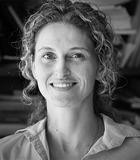
Funzione/Ruolo
Capo del Dipartimento di Supporto alle Emergenze e Prima ricercatrice presso l'EUCENTRE (Centro Europeo di Ricerca e Formazione in Ingegneria Sismica) di Pavia
Percorso professionale
Dopo aver conseguito la laurea in Ingegneria Edile/Architettura presso l'Università degli Studi di Pavia nel 2001, prosegue il suo percorso formativo con un dottorato di ricerca in ingegneria sismica nel 2004. Nel 2005 si sposta negli Stati Uniti, dove aveva già lavorato durante il dottorato, in qualità di Post doctoral research scholar presso la University of California a San Diego. Rientrata a Pavia, lavora come assegnista di ricerca all'Università. Dal 2006 è consulente per il Centro Europeo di Formazione e Ricerca in Ingegneria Sismica (EUCENTRE) dove attualmente è coordinatrice scientifica delle prove su sistemi di isolamento e dissipazione condotte presso il laboratorio sperimentale TREES Lab, e responsabile delle attività di risposta rapida alle emergenze sismiche.
Risultati scientifici
I principali interessi scientifici di Chiara Casarotti riguardano la ricerca applicata e sperimentale nel campo dell'ingegneria sismica, del comportamento dinamico delle strutture in cemento armato, dei sistemi di isolamento sismico e della valutazione strutturale post-emergenza. Nello specifico, si è occupata di procedure statiche lineari per la valutazione della risposta dinamica di strutture in cemento armato. La ricerca numerica e sperimentale si è poi spostata sui sistemi e dispositivi di isolamento e dissipazione antisismica testati a scala reale nelle strutture di prova del TREES Lab. Negli ultimi anni le attività di Chiara Casarotti si sono concentrate sulla gestione tecnica e la risposta rapida all'emergenza sismica, nell'ambito di progetti italiani ed Europei che l'hanno vista coinvolta sul campo sia in contesti esercitativi sia in terremoti reali: il tema è quello della valutazione, attraverso un'indagini sperimentali, degli edifici e delle infrastrutture nel post terremoto. Dopo il sisma dell'Aquila del 2009 e quello dell'Emilia del 2012, Casarotti viene chiamata a fornire supporto al Dipartimento di Protezione Civile per rilievi di agibilità ordinari su strutture di destinazione d'uso (residenziale, industriale, commerciale) e rilievi strumentali su strutture speciali, come l'Ospedale San Salvatore o la Di.co.ma.C di Bologna.
Attività editoriali e pubblicazioni
È autrice di numerose pubblicazioni nazionali ed internazionali fra cui:
(2014) Monteiro R, Marques M, Adhikari G, Casarotti C, Pinho R. Spectral reduction factors evaluation for seismic assessment of frame buildings. Engineering Structures, 77:129-142.
(2013) Pinho R, Marques M, Monteirom Casarotti C, et al. Evaluation of Nonlinear Static Procedures in the Assessment of Building Frames.Earthquake Spectra, 29(4):459-1476.
(2012) Casarotti C, Pavese A, Peloso S. Valutazione delle strutture nella fase post terremoto. Il modulo sviluppato da Eucentre e l'attività sul campo. Progettazione Sismica, 3:37-48.
(2009) Casarotti C, Pavese A, Peloso S. Seismic Response of the San Salvatore Hospital of Coppito (L'Aquila) during the 6th April 2009 earthquake. Progettazione Sismica, 3, Special Abruzzo, Italiano (163-176) e Inglese (159-172).
(2009) Benzoni C, Casarotti C. Effects of Vertical Load, S train Rate and Cycling on the Response of Lead-Rubber Seismic Isolators. Journal of Earthquake Engineering, 13:293-312.
(2009) Casarotti C, Monteiro R & Pinho R. Verification of spectral reduction factors for seismic assessment of bridges. Bulletin of the New Zealand Society for Earthquake Engineering, 42(2).
(2009) Pinho R, Monteiro R, Casarotti C, Delgado R. Assessment of Continuous Span Bridges through Nonlinear Static Procedures. Earthquake Spectra, 25(1):143-159.
(2007) Pinho R, Casarotti C, Antoniou S. A comparison of Single-Run Pushover Analysis Techniques for seismic assessment of bridges. Earthquake Engineering & Structural Dynamics, 36:1347-1362.
(2007) Casarotti C, Pinho R. An adaptive capacity spectrum method for assessment of bridges subjected to earthquake action. Bulletin of Earthquake Engineering, 5:377-390.
(2006) Casarotti C, Pinho R. Seismic response of continuous span bridges through fibre-based finite element analysis. Earthquake Engineering and Engineering Vibrations 5(1):119-131.
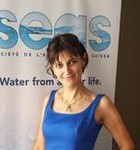
Area STEM: Ingegneria
Competenze: acustica ambientale, acustica edilizia, cicli termodinamici, efficienza energetica, energie alternative, fisica tecnica, ingegneria civile, trasmissione del calore, trattamento dell'aria
Parole chiave: ambiente, awa modula, carenza idrica, cicli termodinamici, edilizia sostenibile, estrazione di acqua dall'aria, fonti rinnovabili, risparmio energetico, seas-sa, trasmissione del calore
Regione: ESTERO
Funzione/Ruolo
Responsabile Ricerca & Sviluppo presso la SEAS-SA. Ricercatrice esterna e docente a contratto presso l'Università degli studi di Pavia.
Percorso professionale
Dopo la laurea in Ingegneria Civile, indirizzo Idraulico, conseguita all'Università degli Studi di Pavia nel 2001, prosegue gli studi con un Master di primo livello sulla Tutela delle acque superficiali presso la stessa università. In seguito, frequenta un corso di acustica alla F.A.S.T. (Federazione delle associazioni scientifiche e tecniche) diventando "tecnico competente in acustica ambientale". Dal 2001 al 2014 presta servizio, prima come tutor poi come collaboratrice esterna alla ricerca e alla didattica, presso l'Università di Pavia, facoltà di ingegneria, per l'insegnamento di Fisica Tecnica. Parallelamente, consegue il dottorato di ricerca in Tecnologie per l'energia e per l'ambiente all'Università degli studi di Bergamo, con una tesi sull'edilizia energeticamente sostenibile. Oltre ad essere "certificatore energetico" in Lombardia e in Liguria, viene scelta per insegnare in numerosi corsi per la formazione di questi professionisti. Nel frattempo si dedica anche alla libera professione come tecnica competente in acustica. Nel 2012, Lucia Cattani partecipa al progetto, in collaborazione con l'Università di Pavia, che permette a lei e ai colleghi di realizzare un prototipo di macchina per l'estrazione di acqua dall'aria. Attualmente è responsabile della divisione ricerca e sviluppo per SEAS-SA, la start up svizzera creata per commercializzare macchine integrate per l'estrazione di acqua dall'aria e l'ottimizzazione energetica degli impianti negli edifici.
Risultati scientifici
Grazie alla specializzazione ottenuta con il lavoro di didattica e ricerca e con il dottorato in Fisica Tecnica, Lucia Cattani, accanto alla formazione di base in idraulica e trattamento delle acque, acquista una vasta esperienza in ambito di risparmio energetico, energie alternative, cicli termodinamici, sistemi cogenerativi, trattamento dell'aria e della condensa, acustica ambientale. Competenze che le consentono di entrare nel gruppo di progettazione di un prototipo di macchina per estrarre acqua dall'aria e di diventare R&D manager della SEAS-SA per la costruzione e vendita di tali macchine. Il principio fisico alla base del sistema è l'accelerazione dalla naturale condensazione del vapore contenuto nell'aria per mezzo di un ciclo inverso a compressione. L'evoluzione del progetto, che ha portato alla creazione della macchina commerciale AWA modula, ha permesso di sfruttare al meglio tutti gli effetti positivi del sistema e la possibilità di integrarlo negli impianti esistenti negli edifici. In tal modo, con un'unica spesa energetica, si ottiene acqua di ottima qualità, un contributo per il riscaldamento e uno per il raffreddamento. Il prodotto, che si pone come una soluzione alla carenza idrica e al risparmio energetico, è già commercializzato in diverse parti del mondo tra cui Italia, Emirati Arabi, Caraibi, Messico, Perù, Tunisia, Libia.
Attività editoriali e pubblicazioni
Lucia Cattani partecipa a conferenze nazionali ed internazionali ed è autrice di numerosi articoli scientifici, tra cui:
(2024) L. Cattani; A. Magrini; A. Chiari. A Method and Metrics to Assess the Energy Efficiency of Smart Working. Buildings 14(3), 741; https://doi.org/10.3390/buildings14030741
(2023) P. Cattani; L. Cattani; A. Magrini. Tyre–Road Heat Transfer Coefficient Equation Proposal. Appl. Sci. 2023, 13, 11996. https://doi.org/10.3390/app132111996 publisher’s link https://www.mdpi.com/2076-3417/13/21/11996
(2023) L. Cattani; P. Cattani; A. Magrini; R. Figoni; D. Dondi; D. Vadivel. Suitability and Energy Sustainability of Atmospheric Water Generation Technology for Green Hydrogen Production. Energies 2023, 16, 6440. https://doi.org/10.3390/en16186440 publisher’s link https://www.mdpi.com/1996-1073/16/18/6440
(2023) L. Cattani; P. Cattani; A. Magrini. Air to Water Generator Integrated System Real Application: A Study Case in a Worker Village in United Arab Emirates. Appl. Sci. 2023, 13, 3094. https://doi.org/10.3390/app13053094 publisher’s link https://www.mdpi.com/2076-3417/13/5/3094
(2022) L. Cattani; A. Magrini; V. Leoni. Energy Performance of Water Generators from Gaseous Mixtures by Condensation: Climatic Datasets Choice. Energies 2022, 15, 7581. https://doi.org/10.3390/en15207581, publisher’s link https://www.mdpi.com/1996-1073/15/20/7581
(2021) L. Cattani; P. Cattani; A. Magrini. Air to Water Generator Integrated Systems: The Proposal of a Global Evaluation Index—GEI Formulation and Application Examples. Energies 2021, 14, 8528. https://doi.org/10.3390/en14248528, publisher’s link https://www.mdpi.com/1996-1073/14/24/8528
(2021) L. Cattani; P. Cattani; A. Magrini. Extraction from Air: A Proposal for a New Indicator to Compare Air Water Generators Efficiency. Energies 2021, 14, 224. https://doi.org/10.3390/en14010224, publisher’s link https://www.mdpi.com/1996-1073/14/1/224
(2021) L. Cattani; P. Cattani; A. Magrini. Photovoltaic Cleaning Optimization: A Simplified Theoretical Approach for Air to Water Generator (AWG) System Employment. Energies 2021, 14, 4271. https://doi.org/10.3390/en14144271, publisher’s link https://www.mdpi.com/1996-1073/14/14/4271
(2018) Cattani L. Magrini A., Cattani P. Water Extraction from Air by Refrigeration¡ªExperimental Results from an Integrated System Application, Applied Sciences. 2018; 8(11):2262.
(2017) Magrini A, Cattani L, Cartesegna M, Magnani L.Water Production from Air Conditioning Systems: Some Evaluations about a Sustainable Use of Resources, Sustainability 2017, 9(8), 1309; doi:10.3390/su9081309.
(2015) Magrini A, Cattani L, Cartesegna M, Magnani L. Production of water from the air: the environmental sustainability of air-conditioning systems through a more intelligent use of resources. The advantages of an integrated system. Energy Procedia, 78:1153-1158.
(2015) Magrini A, Cattani L, Cartasegna M, Magnani L. Integrated systems for air conditioning and production of drinking water - Preliminary considerations. Energy Procedia, 75:1659-1665.
(2010) Magrini A, Cattani L, Magnani L. A global index to evaluate the acoustical and thermal behavior of buildings: first evaluations and applications to common building walls. ISRA Melbourne, Victoria, Australian Acoustical Society.
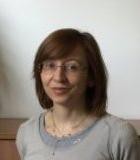
Funzione/Ruolo
Professoressa ordinaria di Ingegneria elettronica e Telecomunicazioni, TNG Group, Politecnico di Torino
Percorso professionale
Dopo la laurea in Ingegneria Elettronica all'Università di Firenze nel 1996, prosegue gli studi ottenendo un dottorato di ricerca in Ingegneria Elettronica e delle Telecomunicazioni presso il Politecnico di Torino nel 2000. Dallo stesso anno entra nel Dipartimento di Elettronica e Telecomunicazioni presso il Politecnico di Torino, prima con una borsa di Cselt (oggi Telecom Italia) su reti ATM senza fili, poi con una posizione di breve termine come assistente. Dal 1998 al 2003, svolge lavoro di ricerca presso il Centro di comunicazioni wireless e il California Institute per le telecomunicazioni e Information Technology dell'Università della California, a San Diego. Nel 2012 e 2016, è visiting professor alla Monash University (Australia). Attualmente è professoressa ordinaria al Dipartimento di Elettronica e Telecomunicazioni, e dal 2012 al 2018 è la coordinatrice del Master in Comunicazione e Ingegneria Informatica presso il Politecnico di Torino. Dal marzo 2018 è Delegata del Rettore per gli Alumni e l'Orientamento alla Carriera.
Risultati scientifici
Chiasserini ha partecipato a diversi progetti nazionali ed europei sui sistemi di rete wireless, come i progetti RAMON, VICOM, PATTERN, NEWCOM++, NEWCOM#, MEADOW, VICSUM, FIGARO, ed è stata Principal Investigator per i progetti nazionali MASP, TA_SL, IoT_|_ToI, e LIMPID, così come per i progetti H2020 5G-Crosshaul, H2020 5G-TRANSFORMER, e H2020 I-REACT. È stata coordinatrice del progetto internazionale QNRF GAD sulle reti di accesso wireless di prossima generazione (2012-2015), del progetto internazionale FLAG sulla radio full-duplex e del progetto MIMOSE sulla connettività mobile locale. È stata Principal Investigator anche per i contratti tra il Politecnico di Torino e ALCATEL, Telecom Italia, Magneti Marelli, INLAB, FCA, e TIM.
I suoi interessi di ricerca sono principalmente nel campo delle reti wireless e mobili. I suoi articoli sono stati pubblicati su riviste specializzate di grande prestigio, e ha ricevuto diversi Best Paper Awards. Carla è anche coautrice di sei brevetti.
Attività editoriali e pubblicazioni
Carla è Editor-in-Chief della rivista Computer Communications ed è un Associate Editor della ACM/IEEE Transactions on Networking. Ha fatto parte per diversi anni dell'Editorial Board delle IEEE Transactions on Mobile Computing, delle IEEE Transactions on Wireless Communications, e dell'Ad Hoc Networks Journal, e dell'Executive Editorial Committee delle IEEE Transactions on Wireless Communications.
È co-autrice di più di 300 articoli, tra cui:
(2019) Agarwal, S.; Malandrino, F.; Chiasserini, C. F.; De, S., VNF Placement and Resource Allocation for the Support of Vertical Services in 5G Networks. IEEE-ACM Transactions on Networking
(2018) Malandrino, F.; Chiasserini, C. F.; Kirkpatrick, S., Cellular Network Traces Towards 5G: Usage, Analysis and Generation, IEEE Transactions on Mobile Computing
(2015) Malandrino F, Limani Z, Casetti C, Chiasserini CF. Interference-aware downlink and uplink resource allocation in HetNets with D2D support. IEEE Transactions on Wireless Communications.
(2006) Chiasserini, C. F.; Garetto, M., An Analytical Model for Wireless Sensor Networks with Sleeping Nodes, IEEE Transactions on Mobile Computing.
(2005) Srinivasan, V.; Nuggehalli, P.; Chiasserini, C.F.; Rao, R.R., An Analytical Approach to the Study of Cooperation in Wireless Ad Hoc Networks, IEEE Transactions on Wireless Communications.
Riconoscimenti e premi
Nel 2010 Carla Fabiani Chiasserini riceve il premio "Best Editor" dalla Ad Hoc Networks Journal. Co-autrice di tre brevetti, fa anche parte del Comitato Scientifico della Fondazione Bruno Kessler ed è affiliata anziana della IEEE (Institute of Electrical and Electronics Engineers) e componente di ACM (Association for Computing Machinery).

Area STEM: Ingegneria
Competenze: Data science, fabbricazione additiva, ingegneria della produzione, ingegneria meccanica, intelligenza artificiale, machine learning, manifattura avanzata, statistica industriale
Parole chiave: biostampa 3D, controllo statistico di processo, processi manifatturieri avanzati, stampa 3D
Regione: Lombardia
Funzione/Ruolo
Professoressa ordinaria di Tecnologie e Sistemi di Lavorazione al Politecnico di Milano. Visiting professor al MIT (Massachusetts Institute of Technology). Presidente del Comitato tecnico-scientifico di MICS (Made in Italy Circolare e Sostenibile). Membro del Gruppo di supporto strategico alla Commissione Europea MANUFUTURE. Membro del CdA di MADE – Competence Center Industria 4.0.
Percorso professionale
Dopo la laurea in Ingegneria Gestionale al Politecnico di Milano (1996), ha conseguito un Dottorato di ricerca in Tecnologie e Sistemi di Lavorazione (2001). Nello stesso anno è stata visiting post-PhD presso la Pennsylvania State University (PSU), con cui collabora tuttora. Ricercatrice dal 1999, professoressa associata dal 2003, è dal 2014 professoressa ordinaria al Politecnico di Milano.
Nel 2025 è stata Visiting Professor presso il Department of Mechanical Engineering del Massachusetts Institute of Technology (MIT), dove ha insegnato il corso di Additive Manufacturing nello Spring Semester.
Risultati scientifici
Il suo principale interesse di ricerca è lo sviluppo di processi manifatturieri “intelligenti” e “autonomi”, basati sull’analisi di big data (segnali, immagini, video) per la manifattura avanzata, con particolare attenzione alla fabbricazione additiva (Additive Manufacturing) e alla biostampa 3D.
Ha coordinato diversi progetti europei e nazionali sulla manifattura digitale, intelligente e circolare. Collabora con l’Agenzia Spaziale Europea, l’Agenzia Spaziale Italiana e con gruppi di ricerca internazionali, tra cui MIT, Georgia Institute of Technology, Technical University of Munich (TUM) e Imperial College London.
Attività editoriali e pubblicazioni
È Senior Editor o Department Editor di riviste scientifiche di rilievo internazionale, tra cui IISE Transactions, Informs Journal of Data Science, Journal of Quality Technology, Progress in Additive Manufacturing e Additive Manufacturing Letters.
È autrice di oltre 200 pubblicazioni scientifiche sui temi di ricerca e presidente del Comitato tecnico-scientifico del progetto Made in Italy Circolare e Sostenibile (Next Generation EU). Fa parte del gruppo di supporto della Commissione Europea sulle strategie di ricerca per il futuro del manifatturiero.
Riconoscimenti e premi
Bianca Maria Colosimo è la ricercatrice con il maggior numero di pubblicazioni al mondo sul tema “in-situ monitoring additive manufacturing” (Scopus, ultimo aggiornamento al marzo 2025).
Premi e riconscimenti recenti
2024 Inserita nella lista World Top 2% Scientist (Stanford University & Elsevier)
2023 George Box Medal Award (European Network for Business and Industrial Statistics)
2023 Jacob Wallenbergs Foundation Award (Royal Swedish Academy of Engineering Sciences) per la ricerca nei materiali avanzati
2023 ASQ Brumbaugh Award (American Society for Quality)
2023 Certificazione ad honorem – Esperta Internazionale di Additive manufacturing - European Welding Foundation (EWF)

Funzione/Ruolo
Professoressa ordinaria in Ingegneria Economico Gestionale all'Università degli Studi dell'Aquila.
Percorso professionale
Dopo la laurea in Economia all’Università degli Studi dell’Aquila, dal 2000 al 2005 presta servizio, prima come tutor poi come collaboratrice alla ricerca ed alla didattica, presso l'Università degli Studi di L’Aquila, Facoltà di Ingegneria, per gli insegnamenti di Economia Applicata all’Ingegneria, Economia Industriale ed Economia dei Servizi di Pubblica Utilità. Parallelamente, prosegue il suo percorso formativo con un dottorato di ricerca in Ingegneria Economico Gestionale presso l’Università degli Studi di San Marino che consegue nel 2004.
Nel 2007 è ricercatrice, nel 2015 è professoressa associata e dal 2020 è professoressa ordinaria in ingegneria Economico Gestionale presso l’Università degli Studi dell’Aquila.
Afferente al Collegio di Ingegneria Industriale ed al Collegio di Ingegneria Elettronica, la sua attività di docenza è focalizzata sui corsi di Economia ed Organizzazione Aziendale e Gestione dei Sistemi Sanitari e Strumentazione di Diagnostica Medica.
Risultati scientifici
L’attività di ricerca della Prof.ssa Federica Cucchiella è iniziata nel 2000 con il Dottorato di Ricerca in Ingegneria Economico Gestionale.
Inizia la propria attività scientifica interessandosi delle problematiche di ottimizzazione delle performance della supply chain e di trasferimento tecnologico.
Le ricerche si sono poi focalizzate su tematiche ambientali inerenti la gestione dei rifiuti, lo sfruttamento ecosostenibile dell'energia solare, le energie rinnovabili e l’economia circolare.
Nelle ricerche scientifiche condotte una particolare attenzione è stata rivolta, con riferimento agli aspetti economici e gestionali, alla gestione degli investimenti finalizzati alla promozione delle energie da fonti rinnovabili con specifica concentrazione all’energia fotovoltaica, al biometano ed agli inceneritori con recupero energetico. Sono state inoltre sviluppate ricerche per promuovere l'adozione, da parte del mercato, di tecnologie innovative a supporto delle energie rinnovabili, analizzando come semplificare l'interconnessione al sistema di trasmissione e distribuzione dell’energia e come supportare politiche che consentano la generazione, l'integrazione, la sicurezza e l'uso sostenibile di energia rinnovabile.
Al fine di promuovere ed incentivare uno sviluppo sostenibile, si è interessata dello studio di nuovi modelli di business che mettano in pratica i principi dell’Economia Circolare con riferimento, tra gli altri, ai rifiuti da apparecchiature elettriche ed elettroniche.
Negli ultimi anni le attività di ricerca scientifica della Prof.ssa Federica Cucchiella si sono concentrate sulla definizione di framework multidisciplinari a supporto di decisioni che favoriscano il retrofit degli edifici esistenti al fine ultimo di rendere le città più efficienti, intelligenti, resilienti ed in generale sostenibili.
Le sue ricerche sono generalmente caratterizzate da una elevata interdisciplinarità in un’ampia gamma di aree di ingegneria e scienze applicate alle energie rinnovabili.
È autrice di quattro brevetti di invenzione industriale che possono contribuire alla promozione dello sviluppo sostenibile ed è socia fondatrice dello Spin-off SENSing. La società, di cui ha presieduto il CDA, opera nel campo della produzione di prodotti ingegneristici materiali e bio-materiali innovativi, della ricerca scientifica e dell'innovazione tecnologica applicata all'innovazione di processo o prodotto e l'erogazione di servizi nel campo della ricerca scientifica.
Attività editoriali e pubblicazioni
È co-autrice di circa 100 pubblicazioni scientifiche, tra cui:
[2020] Cucchiella F, D'Adamo I, Gastaldi M, Koh L, Santibanez-Gonzalez EDR. Assessment of ghg emissions in Europe: Future estimates and policy implications. Environmental Engineering and Management Journal, 19(1):131-42.
[2020] Annibaldi V, Cucchiella F, De Berardinis P, Gastaldi M, Rotilio M. An integrated sustainable and profitable approach of energy efficiency in heritage buildings. Journal of Cleaner Production, 251.
[2019] Ferella F, Cucchiella F, D'Adamo I, Gallucci K. A techno-economic assessment of biogas upgrading in a developed market. Journal of Cleaner Production, 210:945-57.
[2019] Annibaldi V, Cucchiella F, De Berardinis P, Rotilio M, Stornelli V. Environmental and economic benefits of optimal insulation thickness: A life-cycle cost analysis. Renewable and Sustainable Energy Reviews, 116.
[2018] Cucchiella F, Gastaldi M, Miliacca M. The management of greenhouse gas emissions and its effects on firm performance. Journal of Cleaner Production, 167:1387-400.
[2018] Awasthi AK, Cucchiella F, D'Adamo I, Li J, Rosa P, Terzi S, et al. Modelling the correlations of e-waste quantity with economic increase. Science of The Total Environment, 613-614:46-53.
[2017] Cucchiella F, D'Adamo I, Gastaldi M. Sustainable waste management: Waste to energy plant as an alternative to landfill. Energy Conversion and Management, 131:18-31.
[2016] Cucchiella F, D’Adamo I, Rosa P. Urban waste to energy (WTE) plants: A social analysis. JP Journal of Heat and Mass Transfer, 13(3):421-44.
[2016] Cucchiella F, D'Adamo I, Gastaldi M. A profitability assessment of small-scale photovoltaic systems in an electricity market without subsidies. Energy Conversion and Management, 129:62-74.
[2016] Cucchiella F, D'Adamo I. Technical and economic analysis of biomethane: A focus on the role of subsidies. Energy Conversion and Management, 119:338-51.
[2015] Cucchiella F, D’Adamo I, Lenny Koh SC, Rosa P. Recycling of WEEEs: An economic assessment of present and future e-waste streams. Renewable and Sustainable Energy Reviews, 51:263-72.
[2015] Cucchiella F, D’Adamo I, Gastaldi M. Financial analysis for investment and policy decisions in the renewable energy sector. Clean Technologies and Environmental Policy, 17(4):887-904
Riconoscimenti e premi
2020 Compare tra i 100.000 scienziati internazionali (nei settori di ricerca Energy ed Environmental Sciences) individuati nei database PLOS (PLOS - 100.000 Top Scientists) e realizzati dalla rivista internazionale Plos Biology per classificare i professori degli atenei di tutto il mondo.
2017 VQR 2011/2014 - 1° posto a livello nazionale del Gruppo Univaq. I prodotti della Prof. Cucchiella ricevono tutti la valutazione massima pari ad 1 (eccellente).
2017 Risulta assegnataria del Fondo di finanziamento per le attività base di ricerca (FFABR) destinato a contribuire alla ricerca di base di ricercatori e professori di seconda fascia in servizio a tempo pieno presso le Università statali.
2017 Il paper “Recycling of WEEEs: An economic assessment of present and future e-waste streams” (Renewable and Sustainable Energy Reviews, 2015, 51:263-72) è classificato su Web of Science come Highly Cited Paper.
2015 Il lavoro "Cleaner Energy Production and Sustainable Investment: A Portfolio Analysis in the Italian Electricity Market" presentato al 5th International Workshop Advances in Cleaner Production (San Paulo, Brazil, 20-22 May 2015) riceve la "Special mention" in the 5th International Workshop.
2015 Riceve da Elsevier l'Atlas Award per il paper "Recycling of WEEEs: An economic assessment of present and future e-waste streams" Renewable and Sustainable Energy Reviews (Volume 51, November 2015).
2010 Il suo contributo "Risk management in supply chain: a real option approach" è classificato tra i Top 20 articles del Journal of Manufacturing Technology management.
2010 Riceve da Supply Chain Management: an International Journal (Emerald Group Publishing Limited) il riconoscimento di Higly Commended Award per il paper "A photovoltaic system in a residential building: environmental and economic optimization analysis" presentato durante 8th International Conference on Supply Chain Management and Information Systems, Hong Kong, China, 6-8 ottobre 2010.
2007 Highly Commended Winner at the Emerald Literati Network Awards for Excellence.
2007 per l'articolo "Risk management in supply chain: a real option approach" Journal of Manufacturing Technology Management - special issue, 17(6), 700-720.
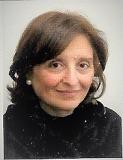
Funzione/Ruolo
Professoressa ordinaria, Vice Direttrice del Dipartimento di Ingegneria dell’Informazione, Università degli Studi di Brescia
Percorso professionale
Dopo la Laurea in Fisica, indirizzo Cibernetica presso l’Università degli Studi di Milano, svolge la sua attività in area informatica come borsista CNR (1977-1980), ricercatrice universitaria (1980-1989) e professoressa associata (1989) presso la stessa Università. Nel 1991 viene chiamata al Politecnico di Milano. Nel 1994 diventa professoressa ordinaria di Ingegneria Informatica e viene chiamata dall’Università di Ancona, dove ricopre il ruolo di Direttrice dell’Istituto di Informatica. Nel 1996 è chiamata dall’Università di Brescia, presso la Facoltà di Ingegneria per la cattedra di Sistemi Informativi. In questo Ateneo svolge intensa attività didattica, di ricerca e di servizio istituzionale promuovendo lo sviluppo dell’area dell’Ingegneria Informatica. Dal novembre 2010 all’ottobre 2016 è delegata del Rettore per l’Innovazione dei Sistemi Informativi di Ateneo, e guida con successo un radicale e complesso processo di rinnovamento dell’infrastruttura ICT e dei sistemi informativi di Ateneo, volto al miglioramento del trattamento delle informazioni, della comunicazione con gli utenti e dell’erogazione dei servizi online. In tale ruolo rappresenta l’Università di Brescia nel Consiglio di Amministrazione e nel Consiglio Consortile del consorzio CINECA (Consorzio interuniversitario per il calcolo automatico) e del consorzio CILEA (Consorzio interuniversitario lombardo per l’elaborazione automatica). Dal 2011 al 2016 ricopre numerosi incarichi, tra cui quelli di Presidente del Sistema Bibliotecario di Ateneo e Presidente del Comitato per l’ICT. Promotrice del Laboratorio di Ateneo su Big&Open Data, è nel Comitato Scientifico del corso di specializzazione su Industry 4.0 organizzato dall’Università degli Studi di Brescia con l’Associazione Industriale Bresciana. E’ membro del Consiglio Direttivo del Consorzio Interuniversitario Nazionale per l’Informatica (CINI), e rappresentante di Ateneo per i Laboratori su Big Data, Smart Cities, Assistive Technologies.
Risultati scientifici
L’attività di ricerca di Valeria De Antonellis si svolge con continuità nell’area delle basi di dati, sistemi informativi e web con particolare attenzione alle metodologie di progettazione, alla modellazione concettuale, rappresentazione e integrazione semantica di dati, processi, servizi. A livello internazionale si è affermata per aver coordinato il progetto finalizzato di ricerca CNR "DATAID" che ha prodotto la metodologia DATAID-1 per la progettazione di basi di dati (citata nel sito storico "People Behind Informatics: The history of Conceptual Modeling"). All’inizio degli anni ottanta, ha sostenuto l’importanza della modellazione concettuale congiunta di dati e processi per tener conto dei requisiti statici e dinamici dei sistemi da progettare, anticipando contenuti delle metodologie di progettazione orientate a oggetti. Per rispondere alla crescente esigenza di condividere ed elaborare dati provenienti da sorgenti eterogenee, ha proposto tecniche originali di integrazione semantica e di matching automatico di schemi di dati. Ha affrontato problematiche nell'area del Semantic Web, proponendo tecniche innovative di ricerca, analisi e ranking di dati e di servizi disponibili su web. I suoi temi di ricerca attuali sono rivolti allo sviluppo di modelli, metodi e strumenti innovativi per la gestione ed esplorazione di Big Data, con applicazione in ambiti strategici quali Smart Cities e Industry 4.0.
Attività editoriali e pubblicazioni
Valeria De Antonellis è co-autrice dei libri: Relational Database Theory (Benjamin/Cummings 1993, ISBN 0-8053-0249-2) e La Teoria Relazionale dei Dati (Bollati Boringhieri, ISBN: 88-339-5031-X, 1985). Curatrice del libro: Computer-Aided Database Design: the DATAID approach (North-Holland 1985, ISBN 0-444-87735-5).
È autrice di oltre 200 articoli scientifici su riviste e atti di conferenze internazionali, fra cui:
(2017) Bianchini D, De Antonellis V, Melchiori M. Wiser: A multi-dimensional framework for searching and ranking Web APIs. ACM Transactions on the Web, 11(3):1-32, ISSN: 1559-1131.
(2014) Bianchini D, Cappiello C, De Antonellis V, Pernici B. Service identification in inter-organizational process design. IEEE Transactions on Services Computing, 7(2): 265-278, ISSN: 1939-1374.
(2010) Bianchini D, Montanelli S, Aiello C, Baldoni R, Bolchini C, Bonomi S, Castano S, Catarci T, De Antonellis V, Ferrara A, Melchiori M, Quintarelli E, Scannapieco M, Schreiber FA, Tanca L. Emergent Semantics and Cooperation in Multi-knowledge Communities: the ESTEEM Approach. World Wide Web, 13(1-2): 3-31, ISSN: 1386-145X.
(2008) Bianchini D, De Antonellis V, Melchiori M. Flexible Semantic-based Service Matchmaking and Discovery. World Wide Web, 11(2):227-251, ISSN: 1386-145X.
(2006) Bianchini D, De Antonellis V, Pernici B, Plebani P. Ontology based Methodology for e-Service Discovery. Information Systems, 31(4):361-380, ISSN: 0306-4379.
(2001) Castano S, De Antonellis V, De Capitani D, Vimercati S. Global Viewing of Heterogeneous Data Sources. IEEE Transactions on Knowledge and Data Engineering, 13(2): 277-297, ISSN: 1041-4347.
(1998) Castano S, De Antonellis V, Fugini MG, Pernici B. Conceptual Schema Analysis: techniques and applications. ACM Transactions on Database Systems, 23(3): 286-332, ISSN: 0362-5915.
(1995) Castano S, De Antonellis V. Reference Conceptual Architectures for Re-engineering Information Systems. International Journal of Cooperative Information Systems, 4(2-3): 213-236, ISSN: 0218-8430.
(1990) De Antonellis V, Zonta B. A Disciplined Approach to Office Analysis. IEEE Transactions on Software Engineering, 16(8): 822-828, ISSN: 0098-5589.
(1985) De Antonellis V, Di Leva A. DATAID-1: a Database Design Methodology. Information Systems, 10(2):181-195, ISSN: 0306-4379.
Riconoscimenti e premi
Ha partecipato come coordinatrice di parti o di interi progetti a numerosi progetti di ricerca nazionali e internazionali. È stata coordinatrice del Gruppo di Lavoro AICA su Basi di Dati (1990-1997) ed ha organizzato numerose giornate di studio e sessioni scientifiche del Congresso AICA. Ha fatto parte dei soci fondatori e del consiglio direttivo del Polo Italiano di Ricerca Scientifica e Tecnologica sull'Interoperabilità "Interop-Vlab.IT" (2008-2014). Nel 2012 ha ricevuto l’Award for Outstanding contribution as Conference Chair 31st International Conference on Conceptual Modeling, ER2012, Florence, Italy. È revisora e PC member delle più importanti conferenze e riviste internazionali nelle tematiche di interesse. È editorial member della rivista internazionale Data&Knowledge Engineering, Elsevier e fa parte del Comitato Scientifico della Collana di Informatica, ed. Franco Angeli.
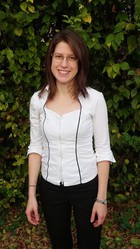
Funzione/Ruolo
Scienziata Senior al Rutherford Appleton Laboratory
Percorso professionale
Mariastefania De Vido consegue la Laurea Magistrale con lode in Ingegneria Fisica al Politecnico di Milano nel 2013. Dopo la laurea viene assunta come scienziata presso l’STFC Rutherford Appleton Laboratory nel Regno Unito dove lavora tuttora allo sviluppo di laser ad alta energia.
Nel 2018 riceve una prestigiosa fellowship dalla Royal Commission for the Exhibition of 1851 che le permette di fondare un laboratorio e un gruppo di ricerca dedicati allo studio ed ottimizzazione di materiali per l’ottica.
In contemporanea alla sua attività lavorativa, tra il 2016 e il 2020 De Vido completa un dottorato alla Heriot-Watt University di Edimburgo con una tesi su soluzioni per incrementare l’energia e frequenza di ripetizione di laser allo stato solido.
Nel 2021 è promossa Technical Leader per lo sviluppo di sorgenti laser ad alta energia di nuova generazione caratterizzate da una frequenza di ripetizione di 100 Hz (100 impulsi al secondo), con responsibilità di direzione scientifica delle attività e gestione di un ampio gruppo di lavoro e fondi da diversi milioni di sterline.
Dal 2019 tiene lezioni all’Università di York su tecnologie laser per la fusione nucleare. Dal 2021 è membro della commissione organizzatrice del corso di dottorato in fotonica applicata erogato dalle Univeristà di St Andrews, Glasgow, Strathclyde, Edimburgo, Dundee e Heriot-Watt.
Nel 2023 completerà un Master of Business Administration presso la Edinburgh Business School.
Risultati scientifici
Durante il suo lavoro di ricerca al Rutherford Appleton Laboratory, Mariastefania De Vido ha condotto ricerche sullo sviluppo di laser a stato solido ad alta energia e alta potenza media.
Il suo lavoro ha portato ad un incremento di diversi ordini di grandezza della potenza ed efficienza di tali sorgenti laser, rendendole di notevole interesse per future applicazioni quali il trattamento di materiali per l’industria aero-spaziale, diagnostiche e trattamenti medici e lo sviluppo di fonti di energia basate sulla fusione nucleare.
Ha lavorato alla realizzazione di laser per centri di ricerca internazionali, tra cui i due laser a nanosecondi più potenti al mondo: il laser DiPOLE100 ora all’HILASE Centre (Repubblica Ceca) e il laser DIPOLE100X allo European XFEL (Germania).
Con il suo gruppo al Rutherford Appleton Laboratory ha sviluppato modelli teorici e metodi sperimentali per lo sviluppo e studio di materiali laser avanzati, caratterizzandone le proprietà termo-ottiche e spettroscopiche e ottimizzandoli per l’uso in laser ad alta energia.
Il suo lavoro di ricerca è supportato da borse di ricerca erogate dalla Royal Commission for the Exhibition for 1851, dalla Commissione Europea e dalla Royal Society.
Attività editoriali e pubblicazioni
Mariastefania De Vido è autrice di numerose pubblicazioni internazionali e brevetti, tra cui: [2021] De Vido M., Mason P. D., Fitton M., Eardley R. W., Quinn G., Clarke D., Ertel K., Butcher T. J., Phillips P. J., Banerjee S., Smith J., Spear J., Edwards C., Collier J. L. Modelling and measurement of thermal stress‑ induced depolarisation in high energy, high repetition rate diode‑pumped Yb:YAG lasers. Optics Express, 29(4): 5607‑23.
[2021] Divoký M., Pilař J., Hanuš M., Navrátil P., Denk O., Severová P., Mason P., Butcher T., Banerjee S., De Vido M., Edwards C., Collier J., Smrž M., Mocek T. 150 J DPSSL operating at 1.5 kW level. Optics Letters, 46(22): 5771‑3.
[2021] Phillips J. P., Banerjee S., Mason P., Smith J., Spear J., De Vido M., Ertel K., Butcher T., Quinn G., Clarke D., Edwards C., Hernandez‑Gomez C., Collier J. L. Second and third harmonic conversion of a kilowatt average power, 100‑J‑level diode pumped Yb:YAG laser in large aperture LBO. Optics Letters, 46(8): 1808‑11.
[2020] De Vido M., Wojtusiak A., Ertel K., High‑resolution absorption measurement at the zero phonon line of Yb:YAG between 80 K and 300 K. Optical Materials Express 10[3]: 717‑723.
[2020] Phillips J. P., Banerjee S., Ertel K., Mason P., Smith J., Butcher T., De Vido M., Edwards C., Hernandez‑Gomez C., Collier J. L. Stable high‑energy, high repetition rate, frequency doubling in a large aperture temperature‑ controlled LBO at 515 nm. Optics Letters 45(10): 2946‑9.
[2019] De Vido M., Ertel K., Wojtusiak A., Mason P. D., Phillips P. J., Banerjee S., Smith J. M., Butcher T. J., Edwards C. Optical rotatory power of quartz between 77 K and 325 K for 1030 nm wavelength. Optical Materials Express, 9(6): 2708‑15.
[2018] De Vido M., Mason P. Laser amplifier module, International Patent Application no. PCT/GB2018/051405, PCT publication no. WO2018215771A1.
[2017] De Vido M., Walsh T. J., Kirkpatrick S., Svrluga R., Ertel K., Phillips P. J., Mason P. D., Banerjee S., Smith J. M., Butcher T. J., Edwards C., Hernandez‑Gomez C., Collier J.L. Impact of gas cluster ion and accelerated neutral atom beam surface treatments on the laser‑induced damage threshold of ceramic Yb:YAG. Optical Materials Express, 7(9): 3303‑11.
[2017] De Vido M., Meissner D., Meissner S., Ertel K., Phillips P. J., Mason P. D., Banerjee S., Butcher T. J., Smith J. M., Edwards C., Hernandez‑Gomez C., Collier J. L. Characterisation of adhesive‑free bonded crystalline Yb:YAG for high energy laser applications. Optical Materials Express, 7(2): 425-32.
[2017] Mason P., Divoky M., Ertel K., Pilar J., Butcher T., Hanus M., Banerjee S., Phillips J., Smith J., De Vido M., Lucianetti A., Hernandez‑Gomez C., Edwards C., Mocek T., Collier J. L. Kilowatt average power 100 J‑level diode pumped solid state laser. Optica, 4(4): 438‑9.
[2017] De Vido M. Laser‑chain alignment, International Patent Application no. PCT/GB2017/050603, PCT publication no. WO/2017/163009.
[2016] Banerjee S., Mason P. D., Ertel K., Phillips P. J., De Vido M., Chekhlov O., Divoky M., Pilar J., Smith J., Butcher T., Lintern A., Tomlinson S., Shaikh W., Hooker C., Lucianetti A., Hernandez‑Gomez C., Mocek T., Edwards C., Collier J. L. 100 J‑level nanosecond pulsed diode pumped solid state laser. Optics Letters, 41(9): 2089‑92.
Riconoscimenti e premi
Mariastefania De Vido ha ricevuto numerosi premi e borse di ricerca, tra cui:
2018: Fellowship dalla Royal Commission for the Exhibition of 1851 in supporto delle sue attività di ricerca nel campo dei materiali per applicazioni laser.
2018: 1° premio per giovani ricercatori, consegnatole durante il congresso “Advanced Solid-State Lasers” (Boston, Stati Uniti).
2019: “Young UK Laser Engineer Prize” conferitole dall’“Association of Industrial Laser Users” come riconoscimento del suo lavoro di sviluppo ed ottimizzazione di laser ad alta energia e alta potenza per applicazioni industriali.
2020: “Staff Recognition Prize” conferitole dallo “Science and Technology Facilities Council”, in riconoscimento del il suo contributo nello sviluppo di personale scientifico.
2020: “MacFarlane Prize” conferito annualmente al/alla doctoral graduate che ha apportato il più significativo contributo alla ricerca della Heriot-Watt University.
2021: Viene selezionata assieme ad altri 30 professionisti provenienti dall’industria, università e governo britannici a prendere parte al programma di leadership “Future Leaders” organizzato dalla Foundation for Science and Technology, attraverso il quale partecipa in attività di policy advice per il governo britannico e organizza dibattiti su temi di ricerca e tecnologia.
2021: “International Exchanges Grant” - borsa di ricerca conferitale dalla Royal Society per condurre ricerche per lo sviluppo di technologie innovative per la realizzazione di materiali ceramici per laser in collaborazione con il CNR italiano.

Area STEM: Ingegneria
Competenze: automatica, robotica, sistemi di controllo avanzati
Parole chiave: controllo dei processi, controllo del traffico, controllo di autoveicoli, controllo di micro-reti e sistemi energetici in rete, guida autonoma, interazione umani-robot, robotica, smart mobility
Regione: Lombardia
Funzione/Ruolo
Professoressa ordinaria di Automatica all'Università di Pavia
Percorso professionale
Consegue la Laurea in Ingegneria Elettronica nel 1987 e il Dottorato in Ingegneria Elettronica e Informatica nel 1992. Diventa Ricercatrice Universitaria presso l’Università di Genova (aprile 1992), Professoressa Associata presso l’Università di Pavia (novembre 1998) e Professoressa Ordinaria di Automatica sempre presso l’Università di Pavia (Gennaio 2005).
Risultati scientifici
Si è occupata di controllo di sistemi complessi (sistemi robotici, reti di autoveicoli, traffico veicolare, reti energetiche anche basate su risorse rinnovabili). Ha proposto nuovi algoritmi per il controllo di impianti e processi il cui modello matematico è affetto da incertezze. Ha proposto nuovi approcci per il controllo del traffico veicolare nelle reti di trasporto con l’obiettivo di ridurre le congestioni e l’impatto ambientale. Si è occupata di controllo avanzato di autoveicoli, collaborando con importanti case automobilistiche e coordinando il gruppo di ricerca italiano in due progetti europei (PROTECTOR, ITEAM). In particolare, ha proposto soluzioni per sistemi di ausilio alla guida (ADAS) e guida autonoma. Si è occupata di interazione uomo-robot proponendo un approccio basato sull’uso congiunto di metodologie di controllo convenzionali e di intelligenza artificiale (deep reinforcement learning). Ha pubblicato più di 380 lavori scientifici, tra cui 118 articoli su riviste internazionali e 3 libri scientifici. Ha inoltre contribuito con capitoli invitati a 23 libri.
Attività editoriali e pubblicazioni
Antonella Ferrara è autrice di numerose pubblicazioni, fra cui:
[2019] Ferrara A, Incremona G.P, Cucuzzella M. Advanced and Optimization Based Sliding Mode Control. SIAM.
[2018] Ferrara A, Simona S, Siri S. Freeway Traffic Modelling and Control. Springer.
[2017] Ferrara A, (Ed.).Sliding Mode Control of Vehicle Dynamics. IET Digital Library.
[2019] Regolin E, Alatorre A, Zambelli M, Victorino A, Charara A, Ferrara A. A Sliding Mode Virtual Sensor for Wheel Forces Estimation with Accuracy Enhancement via EKF. IEEE Transactions on Vehicular Technology, 68(4): 3457-3471.
[2018] Sangiovanni B, Rendiniello A, Incremona G.P, Ferrara A, Piastra M. Deep Reinforcement Learning for Collision Avoidance of Robotic Manipulators, Proceedings of the European Control Conference ECC 2018, Limassol, Cyprus.
[2018] Canudas de Wit C., Ferrara A. A Variable-Length Cell Transmission Model for Road Traffic Systems. Transportation Research Part C: Emerging Technologies, 97: 428-455.
[2018] Cucuzzella M, Lazzari R, Trip S, Rosti S, Sandroni C, Ferrara A. Sliding mode voltage control of boost converters in DC microgrids, Control Engineering Practice, 73:161-170.
[2017] Cucuzzella M, IncremonaG.P, Ferrara A. Decentralized Sliding Mode Control of Islanded AC Microgrids with Arbitrary Topology. IEEE Transactions on Industrial Electronics, 64(8): 6706-6713.
[2017] Incremona G.P, Ferrara A, Magni L. MPC for Robot Manipulators with Integral Sliding Modes Generation. IEEE/ASME Transactions on Mechatronics, 22(3):1299-1307.
[2015]Ferrara A, Simona S, Siri S. Event-triggered model predictive schemes for freeway traffic control.Transportation Research Part C: Emerging Technologies, 58(Part C):554–567.
[2015] Goggia T, Sorniotti A, De Novellis L, Ferrara A, Gruber P, Theunissen J, Steenbeke D, Knauder B, Zehetner J. Integral Sliding Mode for the Torque-Vectoring Control of Fully Electric Vehicles: Theoretical Design and Experimental Assessment. IEEE Transactions on Vehicular Technology, 64(5):1701-1715.
[2012] Capisani L, Ferrara A, Trajectory Planning and Second Order Sliding Mode Motion/Interaction Control for Robot Manipulators in Unknown Environments.IEEE Transactions on Industrial Electronics, 59(8):3189 – 3198.
Riconoscimenti e premi
1986, "IEEE North Italy Section Electrical Engineering Student Award"
2003, Senior Member of the IEEE
2006, Outstanding Reviewer for Automatica Award
2013.2016, Chair of the Women in Control Committee of the IEEE Control Systems Society
2012; 2016-2018, Member of the Board of Governors IEEE Control Systems Society
2015-present, Member of the European Control Association (EUCA) Council
2019, "EPSON EMEA WIN-A-ROBOT Contest Award"
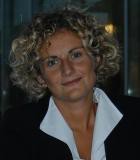
Funzione/Ruolo
Professoressa di Impianti Chimici presso il Politecnico di Torino; Waste, Water and Food Manager del Politecnico di Torino (Green Team)
Percorso professionale
Dopo la laurea in Ingegneria Chimica presso il Politecnico di Torino, prosegue gli studi attraverso un percorso di Dottorato di Ricerca in Ingegneria Chimica dove consegue il titolo presso la stessa Università. Vincitrice per concorso di un posto da Ricercatore Universitario in Ingegneria Chimica, nel settore scientifico disciplinare Impianti Chimici nel Novembre 2002, ottenendo la conferma. Dal Luglio 2010 al Marzo 2016 ha operato in veste di Professore Associato nel medesimo SSD. Nel Marzo 2016 diviene professoressa ordinaria di Impianti Chimici, dove nel Dipartimento di Scienza Applicata e Tecnologia del Politecnico di Torino è attualmente responsabile di un gruppo di ricerca costituito da 15 giovani ricercatori e dottorandi.
Afferente al Collegio di Ingegneria Chimica e dei Materiali ed al Collegio di Energetica, la sua attività di docenza è incentrata nei corsi di Impianti per l’industria Chimica e Alimentare e Processi di Reimpiego e Valorizzazione Energetica.
Risultati scientifici
I suoi interessi scientifici si concentrano prevalentemente sul trattamento catalitico delle emissioni Diesel (es.: filtrazione e combustione del particolato, l’ abbattimento di nanoparticelle, riduzione e adsorbimento di NOx, sviluppo di trappole catalitiche), sulla combustione catalitica del metano (es.: sviluppo marmitte catalitiche per auto a metano), sui filtri catalitici per il trattamento di fumi (es.: sistemi multifunzionali per l’abbattimento di ceneri volanti, di NOx e diossine da inceneritori) dove ha ottenuto diversi finanziamenti industriali (General Motors, Officine Metallurgiche Cornaglia, Petronas, Pirelli, ….), vinto progetti a bando nazionale e comunitario (PRIN, TOP-Expert, ADDnano, FlameSOFC, ...) e possiede 2 brevetti.
Tra le sue linnee di ricerca a carattere ambientale, di particolare rilievo sono i sistemi di ossidazione avanzata di inquinanti (es. reattori e elettrocatalizzatori per l’ossidazione elettrochimica di inquinanti organici biorefrattari, quali fenolo, antibiotici e altri farmaci, coloranti, …; bonifica terreni inquinati; superfici autopulenti). Tra le ricerche intraprese negli ultimi anni di particolare importanza sono i risultati ottenuti in merito all’analisi di piattaforme di trattamento di rifiuti , l’analisi di ciclo vita dei processi industriali in ottica di economia circolare, dove anche in ambito agroalimentare ha collaborato con industrie di riferimento nel settore (es. Waste Italia, Ferrero, Ago Renewables, ENI, Lavazza, AUSTEP, ecc.) ottenendo inoltre importanti finanziamenti strutturati come nel caso del progetto di piattaforma Innovativa Agro-Alimentare-ECOFOOD coordinata da Ferrero, Ricerca & Innovazione per il Miglioramento della Sostenibilità della Filiera Agro-Alimentare, di cui è Debora Fino è stata responsabile di tutte le azioni di ricerca del suo Ateneo.
Attualmente coordina la ricerca di 2 progetti Horizon 2020 finanziati dalla Comunità Europea CELBICON (Cost-effective CO2 conversion into chemicals via combination of Capture, Electrochemical and Biochemical Conversion technologies) e BIOROBURPLUS (Advanced direct biogas fuel processor for robust and cost-effective decentralised Hydrogen production).
Attività editoriali e pubblicazioni
È autrice di oltre 200 pubblicazioni scientifiche, tra cui:
(2018) Malavè A C L, Fino D, Gómez Camacho C E, Ruggeri B. Experimental tests on commercial Sweet Product Residue (SPR) as a suitable feed for anaerobic bioenergy (H2+ CH4) production, Waste Management, 71: 626-635.
(2017) Massa A, Hernandez Ribullen S P, Lamberti A, Galletti C, Russo N, Fino D. Electro-oxidation of phenol over electrodeposited MnOx nanostructures and the role of a TiO2 nanotubes interlayer. Applied Catalysis. B, Environmental, 203: 270-281.
(2016) Negro V, Mancini G, Ruggeri B, Fino D. Citrus waste as feedstock for bio-based products recovery: Review on limonene case study and energy valorization. Bioresource Technology, 214: 806-815.
(2015) Hussain M, Deorsola F A, Russo N, Fino D, Pirone R. Abatement of CH4 emitted by CNG vehicles using Pd-SBA-15 and Pd-KIT-6 catalysts, Fuel, 149: 2-7.
(2014) Mancini G, Viotti P, Luciano A, Fino D. On the ASR and ASR thermal residues characterization of full scale treatment plant, Waste Management, 34: 448-457.
(2013) Ruggeri B, Luongo Malavè A C, Bernardi M, Fino D. Energy efficacy used to score organic refuse pretreatment process for hydrogen anaerobic production, Waste Management, 33: 2225-2233.
(2012) Bensaid S, Deorsola F A, Fino D, Russo N. After-treatment of household wood-fired stove emissions: from catalyst formulation to full-scale system, Catalysis Today, 197: 76-89.
(2011) Palmisano P, Hernandez S P, Hussain M, Fino D, Russo N. A new concept for a self cleaning household oven, Chemical Engineering Journal, 176-177: 253-259.
(2010) Bensaid S, Russo N; Fino D. Power and Hydrogen Co-generation from Biogas, Energy & Fuels, 24: 4743-4747.
(2009) Rutigliano L, Fino D, Saracco G, Specchia V, Spinelli P, Grizzaffi L. Electrochemical Oxidation process for water condensates recycling in a shuttle orbiter, Journal Of Applied Electrochemistry, 39 (11): 2239-2249.
(2008) Rutigliano L, Fino D, Saracco G, Specchia V, Spinelli P. Electrokinetic remediation of soils contaminated with heavy metals, Journal Of Applied Electrochemistry, 38: 1035-1041.
(2007) Fino D. Diesel Emission Control:Catalytic Filters for Particulate Removal, Science And Technology Of Advanced Materials, 8 (1-2): 93-100.
(2006) Cauda E, Hernandez S, Fino D, Saracco G, Specchia V. PM0.1 Emissions during Diesel Trap Regeneration, Environmental Science And Technology, 40: 5532-5537.
(2005) Fino D, Carlesi J C, Saracco G, Specchia V, Spinelli P. Deactivation and regeneration of Pt anodes for the electro-oxidation of phenol, Journal Of Applied Electrochemistry, 35(4): 405-411.
(2004) Fino D, Russo N, Saracco G, Specchia V. A multifunctional filter for the simultaneous removal of fly-ash and NOx from incinerator flue gases, Chemical Engineering Science, 59 (22-23): 5329-5336.
(2003) Fino D, Russo N, Saracco G, Specchia V. The role of suprafacial oxygen in some perovskites for the catalytic combustion of soot, Journal Of Catalysis, 217: 367-375.
(2002) Fino D, Saracco G, Specchia V. Filtration and catalytic abatement of diesel particulate from stationary sources, Chemical Engineering Science, 57(22-23): 4955-4966.
Riconoscimenti e premi
Vincitrice nel Novembre del 2004 del “PREMIO ITALGAS – DEBUTTO NELLA RICERCA” (XVII edizione) per la sua tesi di dottorato (Combustione catalitica del particolato Diesel).
Nel Febbraio del 2007 il suo articolo”Innovative means for the catalytic regeneration of particulate traps for diesel exhaust cleaning”, Chem. Eng. Sci., 58 (3-6)(2003) 951-958, è stato premiato dalla Elsevier Science Publisher come uno degli articoli più citati della rivista Chemical Engineering Science nel corso del quadriennio 2003 - 2006.
Vincitrice nel Dicembre 2007 del “PREMIO SAPIO JUNIOR per la RICERCA ITALIANA” (IX Edizione) per i risultati ottenuti nella ricerca “Nanoparticelle secondarie da filtri per la rimozione del particolato Diesel ed in altri contesti applicativi”.
Ottobre 2009 - l'articolo "Biogas Purification for MCFCs Applications" è stato premiato tra i migliori 5 dallo Scientific Organizing Committee del "HYSYDAYS 2009 - 3rd World Congress of Young Scientists on Hydrogen Energy Systems". L'articolo è stato pubblicato su International Journal of Hydrogen Energy.
Giugno 2010 - Premio ITWIIN Associazione Italiana Donne Inventrici ed Innovatrici, vincitrice premio speciale per la comunicazione DISTI (distretto dell'Informazione Scientifica e Tecnologica per l'innovazione con sede a Bari) in considerazione dell'efficacia nella presentazione di potenziali ricadute sociali ed economiche di progetti scientifici.
Nel settembre 2011 la European Union Women Inventors & Innovators Awards le ha assegnato una menzione speciale in considerazione dell'efficacia nella presentazione di potenziali ricadute sociali ed economiche delle sue ricerche scientifiche da parte della giuria di esperti internazionali, Reykjavik (Islanda).
Nel Febbraio del 2013 l’articolo “M. Hussain, R. Ceccarelli, D.L. Marchisio, D. Fino, N. Russo, F. Geobaldo, Synthesis, Characterization and Photocatalytic Application of Novel TiO2 Nanoparticles” su Chemical Engineering Journal 157, 45-51 del 2010 è stato premiato come ottavo articolo più citato della rivista Chemical Engineering Journal nel corso del periodo 10/2009 – 9/2010.

Funzione/Ruolo
Professoressa ordinaria di Misure Elettriche ed Elettroniche all’Università degli Studi di Brescia, Presidentessa del Consiglio di Corso di Studi Aggregato in Elettronica e Telecomunicazioni del Dipartimento di Ingegneria dell’Informazione, Coordinatrice del Collegio di Dottorato in Technology for Health.
Percorso professionale
Dopo la laurea in Fisica all’Università di Roma La Sapienza nel 1985, lavora per oltre 10 anni presso industrie che operano negli impianti industriali e nell’energia, tra le quali Ansaldo Sistemi Industriali a Milano, dove è responsabile del R&D della sezione di azionamenti a controllo digitale. Alla fine del 1995 entra come ricercatrice di Elettronica all’Università degli Studi di Brescia, dove diventa professoressa Associata di Misure Elettriche ed Elettroniche nel 2002 e Professoressa Ordinaria nel 2016. Nel 2004 crea il Centro di competenza Italiano su Profibus e Profinet, ad oggi operativo. Dal 2013 al 2020 è nel consiglio di Amministrazione di CSMT, il principale centro per il trasferimento tecnologico di Brescia. Dal 2011 fa parte del Consiglio scientifico di SPS, la fiera sull’automazione Industriale. E’ membro dell’ADCOM dell’IEEE Instrumentation and Measurement Society dal 2013 al 2016 e nel 2015 è Vicepresidente per le Conferenze. Dal 2018 è Presidente del Consiglio di Corso di Studi Aggregato in Elettronica e Telecomunicazioni del Dipartimento di Ingegneria dell’Informazione. Nel 2020 viene eletta Coordinatrice del Collegio di Dottorato in Technology for Health.
Risultati scientifici
Il profilo scientifico di Alessandra Flammini è molteplice, avendo iniziato l’attività di ricerca nell’ambito della ricerca industriale con riferimento agli azionamenti a controllo digitale ed essendo poi passata alla ricerca scientifica in ambito prima dell’elettronica dei sistemi embedded, poi dei sensori “smart” e infine dei sistemi distribuiti di misura per l’industria, le smart grid e lo smart living.
Più precisamente, l’attività di ricerca scientifica si è concentrata sin dall’inizio sui circuiti di interfaccia per sensori e sui sensori “smart”, ossia sulle tecnologie che permettono ai sensori di comunicare le proprie informazioni di misura in architetture IoT, fondamentali nei sistemi cosiddetti “smart”, che spaziano dalle smart grid allo smart living, ambiti nei quali Alessandra Flammini è stata responsabile di progetti interdipartimentali di ampio respiro, con budget superiore a 5M€, dal 2013 ad oggi. Per quanto riguarda le tecnologie wireless per l’IoT, sono di assoluto rilievo i suoi studi sperimentali sulla tecnologia LoRaWAN, che ne hanno permesso l’uso in applicazioni distribuite di misura per l’industria, come testimonia l’elevato numero di citazioni delle sue pubblicazioni in merito. Alessandra Flammini è anche una figura di grande importanza per il territorio bresciano. Oltre ad aver fondato un gruppo di ricerca che consta di tre professori ordinari, 2 professori associati e 2 ricercatori e ad aver formulato nuove proposte didattiche sui temi dell’IoT e delle tecnologie per l’impresa digitale, Alessandra Flammini ha anche sviluppato la prima Real Time Ethernet italiana, brevettata e commercializzata da Gefran come GDNET, e risulta coautrice di altri brevetti nazionali e internazionali che hanno avuto valorizzazioni commerciali di rilievo.
Attività editoriali e pubblicazioni
È co-autrice di oltre 300 pubblicazioni scientifiche internazionali, tra cui:
[2022] P. Ferrari, E. Sisinni, P. Bellagente, D. Fernandes Carvalho, A. Depari, A. Flammini, M. Pasetti, S. Rinaldi, I. Silva, "On the use of LoRaWAN and cloud platforms for diversification of mobility-as-a-service infrastructure in smart city scenarios", IEEE Trans. Instrumentation and Measurement, Vol., ISSN 0018-9456.
[2020] E. Sisinni, P. Ferrari, D. Fernandes Carvalho, S. Rinaldi, M. Pasetti, A. Flammini, A. Depari, "LoRaWAN Range Extender for Industrial IoT", IEEE Trans. Industrial Informatics, August, 2020, Vol. 16, N. 9, pp. 5607-5616, ISSN 1551-3203, DOI 10.1109/TII.2019.2958620.
[2018] P. Ferrari, A. Flammini, E. Sisinni, S. Rinaldi, D. Brandao, M. Rocha, "Delay Estimation of Industrial IoT Applications Based on Messaging Protocols", IEEE Trans. Instrumentation and Measurement, September, 2018, Vol. 67, N. 9, pp. 2188-2199, ISSN 0018-9456, DOI 10.1109/TIM.2018.2813798.
[2017] M. Rizzi, P. Ferrari, E. Sisinni, A. Flammini, "Evaluation of the IoT LoRaWAN Solution for Distributed Measurement Applications", IEEE Trans. Instrumentation and Measurement, December, 2017, Vol. 66, N. 12, pp. 3340-3349, ISSN 0018-9456, DOI 10.1109/TIM.2017.2746378.
[2016] E. Sisinni, A. Depari, A. Flammini, "Design and implementation of a wireless sensor network for temperature sensing in hostile environments", Sensors and Actuators A: Physical, January, 2016, Vol. 237, pp. 47-55, ISSN 0924-4247, DOI 10.1016/j.sna.2015.11.012.
[2011] C. M. De Dominicis, P. Ferrari, A. Flammini, S. Rinaldi, M. Quarantelli, "On the Use of IEEE 1588 in Existing IEC 61850-Based SASs: Current Behavior and Future Challenges", IEEE Trans. Instrumentation and Measurement, September, 2011, Vol. 60, N. 9, pp. 3070-3081, ISSN 0018-9456, DOI 10.1109/TIM.2011.2158159.
[2009] A. Flammini, D. Marioli, E. Sisinni, A. Taroni, "Design and Implementation of a Wireless Fieldbus for Plastic Machineries", IEEE Trans. Industrial Electronics, March, 2009, Vol. 56, N. 3, pp. 747-755, ISSN 0278-0046, DOI 10.1109/TIE.2008.2011602.
[2009] P. Ferrari, A. Flammini, D. Marioli, E. Sisinni, A. Taroni, "Wired and wireless sensor networks for industrial applications", Microelectronics Journal, September, 2009, Vol. 40, N. 9, pp. 1322-1336, ISSN 0026-2692, DOI 10.1016/j.mejo.2008.08.012.
[2008] P. Ferrari, A. Flammini, D. Marioli, A. Taroni, "A Distributed Instrument for Performance Analysis of Real-Time Ethernet Networks", IEEE Trans. Industrial Informatics, February, 2008, Vol. 4, N. 1, pp. 16-25, ISSN 1551-3203, DOI 10.1109/TII.2008.919016.
[2004] A. Flammini, D. Marioli, A. Taroni, "A low-cost interface to high-value resistive sensors varying over a wide range", IEEE Trans. Instrumentation and Measurement, August, 2004, Vol. 53, N. 4, pp. 1052-1056, ISSN 0018-9456, DOI 10.1109/TIM.2004.831500.
[2002] A. Flammini, P. Ferrari, E. Sisinni, D. Marioli, A. Taroni, "Sensor interfaces: from field-bus to Ethernet and Internet", Sensors and Actuators A: Physical, September, 2002, Vol. 101, N. 1-2, pp. 194-202, ISSN 0924-4247 , DOI 10.1016/S0924-4247(02)00201-7.
[1999] A. Flammini, D. Marioli, A. Taroni, "Application of an optimal look-up table to sensor data processing", IEEE Trans.Instrumentation and Measurement, August, 1999, Vol. 48, N. 4, pp. 813-816, ISSN 0018-9456, DOI 10.1109/19.779179.
Riconoscimenti e premi
E’ stata coautrice di lavori premiati a conferenza internazionale (ETFA2008, ISPCS2010).
Senior Member IEEE dal 2010, General Chair o Technical Chair di numerose conferenze internazionali, è stata eletta membro dell’ADCOM dell’IEEE Instrumentation and Measurement Society dal 2013 al 2016 e nel 2015 è stata Vicepresidente per le Conferenze.
Member dello Study Group IEEE1588.
Top Italian Scientists nella categoria Ingegneria elettrica.

Area STEM: Ingegneria
Competenze: economia dello spazio, geo-informazione, ingegneria dei costi, ingegneria spaziale, relazioni internazionali, valutazione programmatica e tecnologica
Parole chiave: Alitalia SpA, ASI (Agenzia Spaziale Italiana), Copernicus, ESA (European Space Agency), NASA (National Aeronautics and Space Administration)
Regione: ESTERO
Funzione/Ruolo
Cost Engineer presso l'Agenzia Spaziale Europea (ESA).
Percorso professionale
Elisabetta Lamboglia si laurea presso l'Unversità La Sapienza di Roma in Ingegneria Aerospaziale nel 2003 includendo un’esperienza di sei mesi in ingegneria della manutenzione presso l'Area Tecnica di Alitalia SpA. Nel dicembre 2006 si laurea con lode in Ingegneria Astronautica, presso la Scuola di Ingegneria Aerospaziale, La Sapienza, includendo un’esperienza di quattro mesi come stagista al centro europeo per la ricerca spaziale e tecnologia (ESTEC, Agenzia Spaziale Europea).
Nel 2007 inizia l’esperienza lavorativa in ESTEC come giovane professionista, occuoandosi di modellizzazione dei dati finanziari e di rischio dei sistemi satellitari europei, di 'effetti del mercato' sui componenti spaziali, consulenza di sistema ed economica in disegni e progettazione di missioni spaziali future.
A Giugno 2009 inizia l'esperienza al centro di ricerca NASA Ames (Silicon Valley, California), dove consegue la certificazione in applicazioni spaziali rilasciato dall'Università Spaziale Internazionale (ISU), e dove ha la possibilità di relazionarsi con più di 130 altri professionisti e per un totale di oltre 40 nazionalità diverse. Sempre alla NASA lavora al progetto DREAM (Disaster Risk Evaluation and Management), commissionata dalla Banca Mondiale (the World Bank), il cui obiettivo è l'esplorazione di tecnologie e processi innovativi per applicazioni di gestione dei rischi da catastrofe (Distaster Risk Management).
Da Settembre 2009 a marzo 2010, lavora nell'area business di una compagnia olandese leader del settore petrolchimico (Heerema Marine Contractors), dove dimostra versatilità avendo esteso le capacità lavorative anche nel settore finanziario, in un momento storico particolarmente provato dalla crisi economica del 2008.
Da marzo 2010 ritorna all'Agenzia Spaziale Europea come cost engineer, parte del direttorato della Tecnologia, Ingegneria, e Qualità (TEC), dove supporta diversi progetti trasversalmente in tutti i direttorati.
Nel 2013 viene nominata commissaria esterna nella valutazione indipendente programmatica del progetto PRISMA dell'Agenzia Spaziale Italiana (ASI), il cui obiettivo è il monitoraggio o stato delle risorse naturali, la qualità dell'aria e i livelli di inquinamento.
Nel 2015 ottiene il diploma di laurea in Relazioni Internazionali alla London School of Economics and Political Science (LSE), dove espande ulteriormente conoscenza e capacità in diplomazia, sicurezza internazionale ed ambientale.
Dal 2017 ricopre il ruolo di coordinatrice del team di ingegneri di costi dell'ESA per missioni di monitoraggio globale e sicurezza ambientale (Copernicus) e tutte le missioni di osservazione della Terra.
Nel 2020 consegue diversi certificati rilasciati dall'Organizzazione delle Nazioni Unite (UN), tra cui `Impenditoria per migranti e rifugiuati` e `Tecnologie di Informazione geografica in contesti di fragilità', `Pianificazione integrata nel cambiamento climatico e biodiversità.
Dal novembre 2021 è Mentoring, per ESA, nel Programma STEM Talent Girl, un progetto educativo di formazione e promozione di talenti nel settore tecnico scientifico, un’iniziativa rivolta alle donne, con l’obiettivo di ispirare e sostenere le ragazze nel loro percorso e carriere in materie STEM.
Risultati scientifici
Durante la preparazione della tesi di laurea specialistica ha contribuito alle attività del gruppo GAUSS della Scuola di Ingegneria Aerospaziale dell'Università La Sapienza di Roma, inclusa la partecipazione al lancio del microsatellite UniSat 4 dal cosmodromo di Baikonur in Kazakhstan (26 Luglio 2006).
Da giovane professionista ha lavorato all'ottimizzazione di modelli matematici per costi e rischi di missioni spaziali, ancora operativi. Ha partecipato a studi di fattibilità di diverse missioni spaziali tra cui Copernicus Sentinel 5p, lanciato con successo nell'ottobre 2017.
Negli anni successivi viene nominata come esperta indipendente in diverse valutazioni programmatiche, finanziarie, dialoghi e negoziazioni per implementazione di progetti sviluppati in ESTEC. In aggiunta svolge un ruolo di coordinazione ed armonizzazione in gruppi di lavoro per la selezione delle missioni nel programma `Earth Explorers`, in stretta collaborazione con alti dirigenti dell'Agenzia Spaziale Europea.
Ha seguito da commissaria esterna le criticità della missione Italiana PRISMA investigate, identificate, ed infine affrontate con successo con la messa in orbita del satellite nel marzo 2019.
Negli anni 2017-2020 è stata assegnata al programma di espansione di Copernicus (CHIME, LSTM, CO2M, ROSE-L, CRISTAL, CIMR), che ha supportato nella fase di preparazione al Consiglio ESA a livello ministeriale (Space19+) e avvio di implementazione delle singole missioni.
Da marzo 2022 a giugno 2023, è stata nominata Leader per il Clima e la Sostenibilità per la Strategia, Previsione e Coordinamento dell'ESA. In questo ruolo, è stata responsabile dello Studio Arrhenius e ha guidato la Strategia di Sostenibilità dell'ESA per l'EGA, il Gruppo di Lavoro sulla Decarbonizzazione e l'Azione per il Clima, LCA e Tecnologie Verdi. Ha rappresentato l'ESA nelle collaborazioni con la Commissione Europea e l'Agenzia dell'Unione Europea per il Programma Spaziale sulle Ambizioni del Green Deal relative alla Politica Spaziale e Ambientale.
Rappresentante del settore spaziale in forum internazionali come il Consiglio per le relazioni tra Italia e Stati Uniti (Consiusa), attualmente guida progetti, concentrandosi su ricerca e sviluppo utilizzando dati e IA per applicazioni in Osservazione della Terra e commercializzazione, insieme al suo dottorato di ricerca in Geoinformazione.
Attività editoriali e pubblicazioni
[2025] New Space markets: the European perspective on new frontiers, commercialization, and domestic uses of space applications, E. Lamboglia at all., in T. Hoerber, M. Borowitz, A. Forganni, & de Sousa, M. (Eds.), Routledge Handbook of Space Policy, Routledge, 2025. Doi:10.4324/9781003342380-35.https://www.taylorfrancis.com/chapters/edit/10.4324/9781003342380-35/newspace-markets-elisabetta-lamboglia-vedant-mogha-michel-van-pelt
[2024] The evolution of Earth Observation: exploring space sustainability through European case studies, E. Lamboglia et al., (2024). International Journal of Sustainable Engineering, 17(1), 1–10. https://doi.org/10.1080/19397038.2024.2387427
[2024] Long-term temporal analysis of Sentinel-2 spectral reflectance data for post-earthquake monitoring of urban environment dynamics, E. Lamboglia et al., (2024). European Journal of Remote Sensing, 58(1). https://doi.org/10.1080/22797254.2024.2445658, European Journal of Remote Sensing, 58(1) · Dec 24, 2024
[2024] Long-Term Post-Earthquake Monitoring of Urban Areas Based on Time Series Analysis of Sentinel-2 Spectral Reflectance Data, G. Guerrisi, E. Lamboglia, S. Bonafoni and F. Del Frate, IGARSS 2024 - 2024 IEEE International Geoscience and Remote Sensing Symposium, Athens, Greece, 2024, pp. 3897-3901, https://doi.org/10.1109/IGARSS53475.2024.10642433
[2024] An attractive European Earth Observation Ecosystem of Services: Flexible, scalable, and cost-effective data spaces empowering downstream business opportunities, E. Lamboglia et al., (2024), in Proc. 75th Int. Astronaut. Congr. (IAC), Milan, Italy.
[2023] The potential of hybrid hyperspectral constellations, Steven George et al., 14th IAA SSEO, 8-12 May 2023
[2023] New Space SmallSats concepts, from programmatic to governance and sustainability benefits - the ESA perspective and lesson learnt, Lamboglia et al., 14th IAA SSEO, 8-12 May 2023
[2022] The socioeconomic benefits of Earth Observation applications in the New Space era, Elisabetta Lamboglia, Vedant Paul Mogha, IAC 2022, Paris, 21 Sep 2022, https://dl.iafastro.directory/event/IAC-2022/paper/67962/
[2022] Estimating Copernicus High Priority Candidate Missions Jobs for Europe, Elisabetta Lamboglia, Luisa Corrado, Fabio Del Frate, IAC 2022, Paris, 21 Sep 2022
[2021] Elisabetta Lamboglia, ESTEC, The benefit of Full, Free and Open Satellite geoinformation for detecting and monitoring socio-economic factors on land use, 12th ESSCA Space Policy Workshop (28 April 2021) & UACES 2021 (6-8 September 2021, Space Policy panel)
[2018] Lamboglia E. Extensive Cost Estimating methodologies for the CDF GaiaNIR study, SECESA.
[2014] Lamboglia E. A tool for rapid and early schedule estimates, Project Control Professional.
Riconoscimenti e premi
ESA Teamwork Excellence Award 2019: Copernicus High Priority Candidate Missions Phase A/B1 team.
ESA Teamwork Excellence Award 2019: Concurrent Design Facility team (Future Mission Studies).
Best Mentor Award 2023, Space Generation Advisory Council, in Support of the United Nations Programme on Space Applications. https://spacegeneration.org/best-mentor-spring-2023-elisabetta-lamboglia.
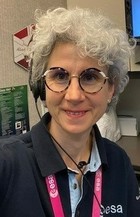
Area STEM: Ingegneria
Competenze: computazione elettromagnetica, ingegneria dei sistemi spaziale, ingegneria delle operazioni, valutazione programmatica e dei servizi operativi
Parole chiave: ESA (European Space Agency), International Space Station (ISS), ISS Payloads, JSC (Johnson Space Center), modulo Columbus, NASA (National Aeronautics and Space Administration)
Regione: ESTERO
Funzione/Ruolo
Operations and Project Engineer presso RHEA Group per l’ Agenzia Spaziale Europea (ESA).
Percorso professionale
Cecilia Marasini si laurea presso l'Università di Pisa in Ingegneria delle Telecomunicazioni nel 2001, includendo una borsa di studio di sei mesi in calcolo elettromagnetico presso la Chalmers University of Technology di Goteborg (Svezia) e uno stage di tre mesi in Hewlett Packard Consultant.
Nel 2001, inizia la sua carriera professionale come ingegnera di sistema e software presso il Centro Tecnologico Motorola di Torino, dove fa parte del team di test di interoperabilità per supportare l'integrazione di terminali UMTS/GSM e 3G nella rete dei servizi mobili.
Il suo interesse per la ricerca elettromagnetica applicata la riporta al mondo accademico e dal 2004 al 2007 svolge il dottorato di ricerca presso il TNO (Organizzazione dei Paesi Bassi per la Ricerca Scientifica Applicata) e l’Università Tecnica di Eindhoven in Olanda. Diventata ricercatrice, lavora nel gruppo Radar and Electronic Warfare presso TNO fino al 2009.
Nel 2010 si trasferisce nel campo dell'ingegneria aerospaziale ed entra a far parte del Gruppo RHEA per Agenzia Spaziale Europea (ESA-ESTEC, Paesi Bassi) nel Direttorato di Human and Robotics Exploration Spaceflight (HRE). Da allora, ricopre il ruolo di Operations e Project Engineer. Ha contribuito alla creazione e alla gestione programmatica della rete degli USOCs (User Support Operations Centres) per l'esecuzione e l'implementazione di payload europei sulla Stazione Spaziale Internazionale (ISS), elaborando concetti di operazioni di payload e processi operativi. Ha contribuito alla creazione e all'implementazione del Centro dei Dati Scientifici e dell’archivio dati per l'archiviazione, la valorizzazione e la pubblicazione dei dati degli esperimenti ESA eseguiti sulla ISS.
Nel 2019 e nel 2022, ha servito temporaneamente l’ufficio ESA Houston Liaison Office come rappresentante dell'ESA presso l'ISS Mission Management Center al Johnson Space Center (JSC) della NASA (Houston, Texas).
Nel 2021, assume un ruolo di ingegneria operativa nella definizione dei concetti di ESA Gateway Operations come prossimo passo per l'operabilità dei moduli ESA in orbita lunare.
Ha promosso le materie STEM nelle scuole primarie e medie in Italia e nei Paesi Bassi, presentando la sua esperienza come ispirazione alle giovani generazioni e alle ragazze in particolare.
Risultati scientifici
Il profilo scientifico di Cecilia Marasini è vario poiché ha iniziato la sua ricerca nelle tecniche di calcolo elettromagnetico mentre svolgeva la sua tesi di laurea in Ingegneria delle telecomunicazioni e ha ampliato la sua ricerca in tecniche di calcolo efficiente per la progettazione di antenne conseguendo un dottorato di ricerca solo dopo una esperienza professionale nel settore delle telecomunicazioni. La principale attività di ricerca si è basata sulla programmazione di un codice di calcolo efficiente utilizzando il metodo di Galerkin per rappresentare l’antenna e applicando una funzione di ottimizzazione Swarm con l’obiettivo di massimizzare il guadagno di antenna e minimizzare il Voltage Standing Wave ratio (VSWR).
Successivamente ha esteso il suo interesse al settore spaziale, lavorando principalmente alla definizione di concetti operativi per l'esecuzione degli esperimenti europei sulla Stazione Spaziale Internazionale e recentemente per gli elementi ESA sul Gateway.
Con l'obiettivo di centralizzare i dati scientifici degli esperimenti ISS europei, Cecilia ha lavorato alla definizione e all'implementazione del Science Data Archive / HRE Data Archive, contribuendo alla definizione di processi, prodotti e deliverables e gestendo il contratto di servizio associato.
Ha ampliato le sue capacità interdisciplinari e la sua esperienza di lavoro in ambienti internazionali assumendo il ruolo di rappresentante presso l'ISS Mission Management Center per l'ESA.
Attività editoriali e pubblicazioni
E’ autrice e co-autrice di varie pubblicazioni scientifiche internazionali, tra cui:
[2022] C. Marasini, A. Nitsch, T. Sheasby, ‘Implementing a Lean Operational Set-up for Gateway ESA Modules’, for presentation at International Astronautical Congress IAC 2022.
[2021] A. Laveron, C. Marasini, et. All, ‘The HRE Science Data Center: A new entity for storing, valorising and publishing the data coming from ESA experiments’, International Astronautical Congress, IAC 2021.
[2018] C. Marasini, A. Nitsch, ‘Implementing Experiments and Science Operations on ISS with a Network of Operations Centres’, Human Spaceflight and Weightlessness Science Workshop, Toulouse, France.
[2011] C. Leone, A. Rogovich, C. Marasini, S. Genovesi and A. Monorchio, ‘A dynamic particle swarm optimization for the design of loaded wire antennas’, IET Microwave, Antennas and Propagation Journal.
[2010] C. Marasini, A New Approach for Wire Antennas Design – Problem formulation and numerical implementation of Galerkin MoM embedded in a Particle Swarm Optimization Process, LAMBERT Academic Publishing, Germany, 2010, ISBN 978-3-8383-4153-8
[2009] C. Marasini and E.S.A.M. Lepelaars, ‘Static magnetic signature translation’, 6th International Marine Electromagnetics Conference, MARLEC 2009.
[2009] C. Marasini, E. S. A. M. Lepelaars and A. P. M. Zwamborn, ‘Interpolation algorithm for fast evaluation of EM coupling between wires’, Applied Computational Electromagnetic Society (ACES) Journal, vol.24 n.3.
[2008] C. Marasini, ‘Efficient Computation Techniques for Galerkin MoM Antenna Design, Ph.D. Dissertation’, Eindhoven University of Technology, Eindhoven, The Netherlands, June 2008, ISBN 978-90-386-1874-6
[2007] A. Rogovich, C. Marasini, A. Monorchio, E. S. A. M. Lepelaars and P. A. M. Zwamborn. ‘Design of Wire Antennas by Using an Evolved Particle Swarm Optimization Algorithm’. Invited paper at International Conference on Electromagnetics in Advanced Applications, ICEAA ’07.
[2007] C. Marasini, E. S. A. M. Lepelaars and P. A. M. Zwamborn, ‘Interpolation Algorithm for Fast Evaluation of EM Coupling between Wires’. Paper presentation at International Symposium on Electromagnetic Theory, EMTS ’07.
[2005] C. Marasini, E. S. A. M. Lepelaars and P. A. M. Zwamborn, ‘Analysis of the resonant behavior of a complex loaded wire by using the Exact Kernel MoM’. Paper presentation at International Conference on Electromagnetics in Advanced Applications, ICEAA ’05.
[2000] C. Marasini, A. Freni, P-S Kildal, ‘Analysis of mictrostrip antenna on a corrugated multilayer structure by using CG-FFT method and G1DMULT algorithm’, Antenna & Propagations AP2000, Millennium Conference.
Riconoscimenti e premi
Nel 2019 riceve il Certificato di eccellenza di RHEA Group per 10 anni di servizio.

Funzione/Ruolo
Direttrice associata per la Robotica e Direttrice del Laboratorio di Soft Robotics Boinispired all'Istituto Italiano di Tecnologia (IIT)
Percorso professionale
Dopo aver conseguito la laurea in Scienze Biologiche presso l'università degli Studi di Pisa nel 1995, entra a far parte dell'Istituto di Biofisica del Consiglio Nazionale delle Ricerche (CNR), dove si occupa di tematiche ambientali e in particolare dell'inquinamento da mercurio. Dal 1997 al 1998 segue un master in Gestione e Controllo dell'Ambiente (EMAS) alla Scuola Superiore Sant'Anna di Pisa (SSSA), con stage presso l'Ufficio Rischi Esteri di Responsabilità Civile e Infortuni, delle Assicurazioni Generali S.p.A. di Trieste. L'anno successivo è assistente di ricerca presso il Centro di Ricerca in Microingegneria (CRIM Lab) della Scuola Superiore Sant'Anna di Pisa, ruolo che ricopre fino al 2004. Dallo stesso anno fino al 2009 è Ricercatrice di Ingegneria Biomedica presso la stessa Scuola Superiore Sant'Anna. Nel novembre 2009 diventa Team Leader al Centro di Micro Bio-Robotica (CMBR) dell'Istituto Italiano di Tecnologia (IIT) di Genova. Nel 2011 consegue un dottorato di ricerca in Ingegneria dei Microsistemi presso l'Università Tor Vergata di Roma. Nello stesso anno diventa coordinatrice del CMBR dell'IIT, posizione che mantiene fino a marzo del 2021, quando diventa Direttrice associata per la Robotica e Direttrice del Laboratorio di Soft Robotics Boinispired, sempre presso l'IIT.
Risultati scientifici
L'ambito di ricerca di Barbara Mazzolai è la robotica soft e bioispirata, un'evoluzione della robotica che prevede l'utilizzo di materiali non rigidi e ispirati al mondo vivente, in particolare agli animali invertebrati e alle piante. Durante il suo periodo al CRIM Lab della Scuola Superiore Sant'Anna, Barbara Mazzolai fonda un nuovo ambito di ricerca specificatamente dedicato alle microtecnologie e alla robotica applicabili all'ambiente e all'agroalimentare, svolge il ruolo di project manager di progetti europei come Octopus, mirato allo sviluppo di un robot soft ispirato all'Octopus vulgaris, e DustBot, una rete di robot autonomi utilizzabili per la raccolta dei rifiuti porta-a-porta e per il miglioramento dell'igiene urbana. Arrivata alla direzione del Centro di Micro Bio-Robotica dell'IIT, fonda una nuova linea di ricerca nel campo della robotica bioispirata e soft robotics denominata "Plantoid", che mira alla realizzazione per la prima volta a livello mondiale di robot ispirati ai movimenti, alle capacità sensoriali e di comunicazione delle piante e delle loro radici per l'esplorazione del suolo e il monitoraggio ambientale.
Attività editoriali e pubblicazioni
Barbara Mazzolai è membro del gruppo editoriale di varie riviste scientifiche, quali Bioinspiration & Biomimetics, Soft Robotics, Biomimetics, Robotics & Automation Letters, Frontiers in Bionics and Biomimetics, Micro-BioRobotics.
È autrice di numerose pubblicazioni su riviste scientifiche internazionali, fra cui:
(2016) Laschi C, Mazzolai B, Cianchetti M. Soft robotics: Technologies and systems pushing the boundaries of robot abilities. Science Robotics, 1:(1).
(2016) Larson C, Peele B, Li S, Robinson S, Totaro M, Beccai L, Mazzolai B, Shepherd R. Highly stretchable electroluminescent skin for optical signaling and tactile sensing. Science, 351(6277): 1071-1074.
(2016) Argiolas A, Puleo GL, Sinibaldi E, Mazzolai B. Osmolyte cooperation affects turgor dynamics in plants. Scientific Reports, 6.
(2016) Mazzolai B, Mattoli V. Robotics: Generation soft. Nature, 536 (7617), 400-401.
(2014) Sadeghi A, Tonazzini A, Popova L, Mazzolai B. A Novel Growing Device Inspired by Plant Root Soil Penetration Behaviors. PLoS ONE, 9:(2).
(2014) Sinibaldi E, Argiolas A, Puleo GL, Mazzolai B. Another lesson from plants: the forward osmosis-based actuator. PLoS ONE, 9(7): e102461.
(2014) Tramacere F, Kovalev A, Kleinteich T, Gorb SN, Mazzolai B. Structure and mechanical properties of Octopus vulgaris suckers. Journal of the Royal Society Interface, 11: 91, 20130816.
(2013) Tramacere F, Beccai L, Kuba M, Gozzi A, Bifone A, Mazzolai B. The Morphology and Adhesion Mechanism of Octopus vulgaris suckers. PLoS ONE, 8(6): e65074.
(2012) Mazzolai B, Margheri L, Cianchetti M, Dario P, Laschi C. Soft robotic arm inspired by the octopus. II. From artificial requirements to innovative technological solutions. Bioinspiration & Biomimetics, 7 025005.
(2011) Mazzolai B, Mondini A, Corradi P, Laschi C, Mattoli V, Sinibaldi E, Dario P. A Miniaturized Mechatronic System Inspired by Plant Roots. IEEE Transaction on Mechatronics, 16(2), 201-212.
Riconoscimenti e premi
Nel 2010 Barbara Mazzolai riceve il premio "Marisa Bellisario" per l'attività scientifica e di gestione del progetto "DustBot", nel 2013 è insignita del Premio Pio Manzù con la Medaglia del Senato della Repubblica italiana per il suo impegno di scienziata per lo sviluppo di tecnologie che aprono nuove strade allo sviluppo sostenibile. Con le stesse motivazioni nel 2015 riceve il premio internazionale Genova: una donna fuori dal coro.
Nel settembre 2021 viene nominata fra le 50 donne italiane di maggiore ispirazione per il mondo della tecnologia con il riconoscimento InspiringFifty for Italy.
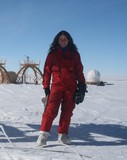
Area STEM: Ingegneria
Competenze: complessità applicata, design sistemico, energie alternative, extreme project management, gestione della diversità, leadership, logistica, project management, sostenibilità, team management
Parole chiave: Antartide, energie alternative, esploratrice, innovazione, management, progetti complessi, sostenibilità, spedizione in Antartide, strategia, tecnologie digitali
Regione: Lazio
Funzione/Ruolo
Interface Manager Cherenkov Array Telescope gGmbH. Prima italiana a capo di una spedizione in Antartide. Esperta di extreme project management
Percorso professionale
Dopo la laurea in Ingegneria Civile presso l’Università di Pisa, prosegue la sua formazione con un master in Management conseguito nel 2010 presso il MIP (Graduate School of Business del Politecnico di Milano). Dal 2002 al 2008 è Energy Manager e Interface Manager per il PNRA (Programma Nazionale di Ricerche in Antartide), dove si occupa sostenibilità e di organizzare le missioni scientifiche in Antartide. Dal 2008 al 2010 è a capo della Missione Europea alla base di ricerca Concordia in Antartide. Nel 2013, per l'istituto polare francese, è a capo della logistica sempre nell’ambito della spedizione Europea in Antartide. Dal 2015 al 2016 dirige la missione di ricerca Belga in Antartide alla stazione Princess Elizabeth (primo Zero Emission Building dell'Antartide). Oltre alle esperienze polari, ha lavorato in United Kingdom nel Broadcasting e Start-up digitale; in Italia come consulente sulle strategie per la sostenibilità e, più di recente, sullo sviluppo delle partnership strategiche per l’innovazione tra Italia e Cina. Ha condotto ricerca in Teoria dell’Organizzazione preso il Politecnico di Milano e presso il Centro per la Complessità di Bergamo.Ha fondato “Complexity aware”: società di consulenza che supporta le aziende interessate a risvegliare il cosiddetto “Antarctic Mindset” (ovvero la capacità di creare strategie per prosperare nell’incertezza) e propone un metodo ideato insieme al filosofo della scienza Gianluca Bocchi
Attualmente è consulente e interface manager presso Cherenkov Array Telescope Observatory gGmbH.
Risultati scientifici
Durante le cinque spedizioni antartiche cui ha partecipato (la si può definire una esploratrice del XXI secolo) Chiara Montanari si è occupata della supervisione delle operazioni scientifiche, dell’organizzazione delle risorse umane, ma anche dei voli e delle operazioni di emergenza, ed è stata il principale contatto per i rapporti coi media. Grazie alle sue capacità di management anche di progetti complessi (e una spedizione al Polo Sud richiede particolare abilità di organizzazione e coordinazione), Montanari ha risposto a tutte le necessità legate al funzionamento del programma. In particolare, nel corso delle spedizioni alla base Concordia (una stazione di ricerca italo-francese situata sull’altipiano antartico a 3300 m di altitudine e a 1200 km dalla costa) e nel corso dell'ultima spedizione alla base di ricerca Princess Elisabeth (una stazione sabotata prima dell'arrivo del team), si è trovata a gestire situazioni ad alto rischio con forte pressione sul raggiungimento del risultato. In ogni missione ha coordinato da un lato il gruppo scientifico, con il proprio background e i propri obiettivi di missione, e dall’altro il team degli esperti di logistica, che ha competenze altrettanto strategiche: l’installazione delle complicate attrezzature scientifiche, l’approvvigionamento in viveri, materiali, carburante e la gestione degli spostamenti all’esterno. Montanari li ha fatti dialogare e lavorare insieme, agevolando anche i rapporti personali spesso non facili in un team multidisciplinare e multiculturale confinato a convivere in un microcosmo isolato. Sulla base di queste esperienze sul campo e degli studi sulla complessità applicata, Montanari oggi si occupa di trasferire alle aziende le competenze chiave per lo sviluppo di un team capace di resilienza e di agire efficacemente anche nel mondo del business contemporaneo, caratterizzato da elevata complessità, incertezza e cambiamento continuo.
Attività editoriali e pubblicazioni
Nel 2015 pubblica Cronache dai ghiacci. 90 giorni in Antartide, in cui narra l'esperienza della spedizione del 2013 alla stazione Concordia e propone il vivere e lavorare in ambiente estremo come metafora del mondo contemporaneo.
Riconoscimenti e premi
È la prima italiana a capo di una spedizione in Antartide.
Nel 2014 vince l'Ambrogino D'Oro dal Comune di Milano per l'impegno nell'innovazione, il trasferimento tecnologico e nella ricerca.
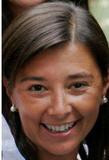
Funzione/Ruolo
Professoressa ordinaria di Chimica Industriale e Tecnologia e Prorettrice Delegata presso il Politecnico di Milano.
Percorso professionale
Si laurea in Ingegneria Chimica al Politecnico di Milano, poi continua la sua formazione con un dottorato di ricerca in Chimica Industriale presso l'Università di Milano, e con un post dottorato al Politecnico di Milano. Nel 2002 diventa assistente presso il Dipartimento di Ingegneria Chimica del Politecnico di Milano. Nel 2007 diventa professoressa associata, e dal 2008 passa al Dipartimento di Energia, dove ora è professoressa ordinaria.
Dal 2018 è coordinatrice del Consiglio di Corso di Laurea in Ingegneria Chimica (livello Bachelor e Master) e Ingegneria della Prevenzione e della Sicurezza nell'Industria di Processo (livello Master) del Politecnico di Milano. Dal 2019 è Vice Preside della Scuola di Ingegneria Industriale e dell'Informazione del Politecnico di Milano. Dal febbraio del 2023 è Prorettrice delegata all'Attuazione del piano strategico.
Risultati scientifici
I processi catalitici ambientali e le fonti di energia sono tra i principali interessi scientifici di Isabella Nova. In particolare, studia le tecnologie catalitiche per il controllo delle emissioni inquinanti dai gas di scarico a combustione magra, i processi foto-elettrochimici per la scissione dell'acqua in idrogeno e ossigeno, e la conversione dell'anidride carbonica in combustibili e prodotti chimici.
Attualmente lavora con Daimler AG (DE), MTU (DE), FPT (I), Johnson Matthey (UK), Politecnico di Milano e in progetti EU-H2020.
Attività editoriali e pubblicazioni
È autrice di più di 130 articoli scientifici nazionali e internazionali, di 4 brevetti internazionali, coeditrice di 6 numeri speciali di Catalysis Today (Elsevier) e 1 libro (Springer), coautrice di più di 250 comunicazioni a congressi.
È stata invitata a presentare i risultati del suo lavoro a più di 20 università o centri di ricerca nazionali e internazionali, e a fare da relatore principale o plenario in più di 10 conferenze internazionali.
Riconoscimenti e premi
Il suo lavoro scientifico nell'ambito della catalisi ambientale ha portato a diversi riconoscimenti, quali l'invito a dare conferenze a importanti conferenze internazionali e presso centri di ricerca di università e società internazionali, l'invito a fungere da editore per diversi volumi dedicati allo studio di processi catalitici per la rimozione di sostanze inquinati (Catalysis Todat, Elsevier Ed.) e di un libro dedicato alla tecnologia SCR per il controllo delle emissioni di NOx a bordo di veicoli (Springer), alla partecipazione all' Editorial Board della rivista Applied Catalysis B: Environmental" (Elsevier).
Ha inoltre, ricevuto alcuni premi, tra i quali il Premio Giovani Scienziati all'interno del tredicesimo International Congress on Catalysis, a Parigi (2004), il Glenn Award for the San Diego Meeting of the Fuel Chemistry Division (2005), il K-idea award dal Kilometro Rosso e l'Energy award dalla Schneider Electric per il brevetto "Apparatus and process for reducing the content of nitrogen oxides in exhaust gases of combustion systems" (2009). Fa inoltre parte del Centro di Eccellenza MIUR per l'Ingegneria dei Materiali e delle Superfici Nanostrutturati (NEMAS), dell'Associazione Italiana di Ingegneria Chimica, della Società Chimica Italiana e dell'American Chemical Society, Fuel Division.
Nel 2018 è stata inclusa nella Inspiring 50 Italy list.
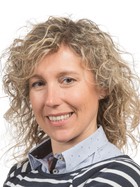
Area STEM: Ingegneria
Competenze: gestione aziendale, gestione dei rischi, gestione del prodotto, governance aziendale, ingegneria ambientale, produzione avanzata, project management, salute e sicurezza sul lavoro, sostenibilità, strategia aziendale, trasformazione digitale, vendite e marketing
Parole chiave: innovazione, management, marketing, strategia, tecnologia
Regione: ESTERO
Funzione/Ruolo
Vice Presidente Marketing strategico presso Wabtec Transit.
Membro del Consiglio di Amministrazione dell'Istituto europeo per l'innovazione digitale e la tecnologia.
Membro del Consiglio di Amministrazione del progetto HumanTech del Politecnico di Milano.
Percorso professionale
Laureata in Ingegneria per l’Ambiente ed il Territorio presso Politecnico di Milano, nel 2002, avvia la sua carriera professionale lavorando in URS, ora AECOM, importante società americana di servizi di consulenza ed ingegneria americana con operazioni internazionali. Prosegue il suo per percorso in PRYSMIAN acquisendo sempre maggiori competenze e responsabilità nell’ambito di grandi progetti di costruzioni di infrastrutture per il transporto dell’energia in Europa, Africa, Medio Oriente, Cina, Giappone e Stati Uniti. Continua la sua crescita come executive nel mondo dei transporti e tecnologie per la mobilità lavorando presso BOMBARDIER TRANSPORTATION in Germania, ALSTOM in Francia e ora in WABTEC in Francia.
Risultati scientifici
Ha superato l’esame di abilitazione alla professione di Ingegnere, è in possesso di certificazioni in Auditing, Gestione Ambiente, Energia, Salute, Sicurezza sul lavoro, Project Management. Ha conseguito Executive Master in Business Administration EMBA presso il Politecnico di Milano. Ha partecipato all’esperienza Doing Business in Silicon Valley dove ha potuto lavorare con Start ups, Venture Capitals, Incubators e l’università di Stanford.
Riconoscimenti e premi
E’ stata selezionata da Valore D, Egon Zehnder e Borsa Italiana per il percorso “InTheBoardroom” che ha seguito e completato con altri 80 executive (Class XI) nel 2022.
Ha vinto nel 2023 il premio di Best Project Work con il progetto Urban Freight Orchestration condotto in collaborazione con Politecnico di Milano ed Alstom.

Funzione/Ruolo
Responsabile del Coordinamento regionale di Confturismo Toscana in seno a Confcommercio Toscana. Responsabile dei Servizi alle imprese (ambiente, sicurezza, sviluppo) di Confcommercio Provincia di Firenze e Confcommercio Provincia di Arezzo.
Percorso professionale
Dopo la laurea in Ingegneria Ambiente e Territorio conseguita nel 2000 all’Università degli Studi di Firenze, e una specializzazione in Sistemi di gestione Ambientale e della Qualità, nel 2001, entra a far parte, come esperta di Ambiente e Sviluppo sostenibile, del team di Coordinatori di percorsi di Agenda 21 (il Piano di azione dell’ONU per lo sviluppo sostenibile per il XXI secolo) Terre di Siena: un percorso per la realizzazione di progetti di sostenibilità ambientale, economica e sociale sul territorio. Durante questo incarico, realizza pubblicazioni e materiale informativo e si occupa anche della formazione e del coinvolgimento di stakeholders economici e dei servizi e dei giovani, all'interno di percorsi in scuole di secondo grado.
Dal 2002 al 2004, all'interno dell'Ufficio Sviluppo & Consulenza ambientale di Monte dei Paschi Bancaverde Spa, fornisce consulenza sui temi delle certificazioni ISO 9001/ISO 14001 e EMAS per le aziende clienti e per aziende impegnate in investimenti (superiori al 1.000.000 €) nel campo delle Energie rinnovabili (parchi eolici, parchi fotovoltaici, centrali biomasse, impianti di gestione e recupero rifiuti).
E' membro, per diversi anni, di Nucleo di Valutazione Ambiente e Paesaggio di Commissione edilizia comunale.
Si occupa successivamente di marketing territoriale e di attrazione di investimenti diretti esteri dentro Toscana Promozione, Agenzia regionale di promozione economica e turistica dove, dal 2005 al 2012, lavora su temi e progetti di internazionalizzazione attiva e passiva, di ricerca e mappatura dell'offerta economica e scientifico-tecnologica regionale di eccellenza (in più settori: energie rinnovabili, immobiliare, life sciences, ICT, nautica), di promozione estera e, viceversa, della ricerca di partner o investitori esteri per il matching con le eccellenze dell'industria e della R&S regionale.
Segue CEO/Imprenditori di aziende e multinazionali toscane e Responsabili della ricerca di atenei e/o centri di ricerca toscani in missioni/tour promozionali all'estero; accompagna la delegazione selezionata dell'ICT toscana a Tokyo durante gli Eventi della Primavera italiana a Tokyo, nel 2007.
Segue l'organizzazione di incoming in Toscana di Venture Capitalist internazionali specializzati e partecipa alla cura dei relativi incontri bilaterali con imprese e attori del sistema della ricerca toscani selezionati.
Passa successivamente a svolgere attività di Key account per le aziende della meccanica e di alcuni settori dell'High Tech regionale.
Nel 2008 viene nominata nel Consiglio di Amministrazione di APEA (Agenzia provinciale per l'Energia, l'Ambiente e lo Sviluppo locale), società in house nata con compiti e competenze in materia di ambiente ed energia, ampliata successivamente a funzioni di sviluppo economico e progettazione europea.
Dal 2103 svolge attività ingegneristica e tecnico-progettuale, all'interno dell'Ufficio Opere Pubbliche della Provincia di Siena, nell'ambito della difesa del suolo e successivamente nel settore viabilità, occupandosi anche di sicurezza sul lavoro, come Responsabile del Servizio di Prevenzione e Protezione per lo stesso Ente (420 dipendenti).
Nel 2020 viene incaricata dalla multinazionale LCI Italy della funzione di HSE Manager (Sicurezza- Ambiente- Innovazione) per le aziende del gruppo in Italia (oltre 10 aziende).
Dal 2021 svolge attività di coordinamento delle Associazioni e Federazioni del comparto turistico della Regione Toscana afferenti al sistema Confcommercio, di interlocuzione vs le istituzioni, regionali e locali, per lo sviluppo del comparto.
Si occupa altresì, come Responsabile di Servizi alle Imprese, di fornire consulenza e supporto in ambito Ambiente, Sicurezza, Igiene e Privacy alle imprese associate a Confcommercio per la Provincia di Firenze e per la Provincia di Arezzo.
Risultati scientifici
Elisa Poggiali è esperta di sviluppo sostenibile, di promozione territoriale e internazionalizzazione. In particolare, si è occupata di implementazione di sistemi di gestione di impresa o di pubblica amministrazione in chiave di attenzione per l'ambiente, per la qualità, per la sicurezza e di valorizzazione e sviluppo economico attraverso la costituzione di relazioni internazionali (sia in ambito scientifico che economico) e la creazione di network di conoscenze per l'attrazione degli IDE (investimenti diretti esteri) e la crescita delle imprese regionali. Ha competenze sui temi dello sviluppo sostenibile e di condivisione di obiettivi e progetti (piani di azione) per i territori locali. Ha curato e cura lo sviluppo di impresa come consulente e la partecipazione di imprese attive in diversi settori, prevalentemente dell’alta tecnologia e dell’innovazione, a eventi e fiere specializzate all'estero.
Attività editoriali e pubblicazioni
È autrice di alcune pubblicazioni a carattere divulgativo sui temi e sui percorsi di AGENDA 21:
(2002) Iozzi G., Fiorito L., Poggiali E., Valeriani B., AG 21 Terre di Siena, Amministrazione provinciale di Siena.
(2002) Iozzi G., Fiorito L., Poggiali E., Valeriani B., Manuale guida AG21 delle Terre di Siena, Amministrazione provinciale di Siena.
(2003) Iozzi G., Fiorito L., Poggiali E., Valeriani B., Gli strumenti volontari di certificazione ambientale: percorso comune tra pubblico e privato. Circondario Valdelsa, Amministrazione provinciale di Siena.
(2003) Iozzi G., Fiorito L., Poggiali E., Valeriani B., Tracce di un processo: Agenda 21 Terre di Siena- Circondario Valdelsa, Amministrazione provinciale di Siena.
(2003) Iozzi G., Fiorito L., Poggiali E., Valeriani B., I tre volti dell'agricoltura, risorsa economica, socio-culturale ed ecologica per lo sviluppo- Circondario Valdelsa, Amministrazione provinciale di Siena.
(2005) Poggiali E., Manuale operativo di Agenda 21 Locale, Amministrazione provinciale di Siena.
E' autrice della pubblicazione realizzata per la Regione Toscana Dipartimento Politiche Territoriali e ambientali, Area Energia: Biserni, Bolognin, Chaussadis, Cesareo, Giovannoni, Mautone, Penna, Poggiali, Scenari per la realizzazione di parchi eolici da parte di Enti Locali, 2005 e di una pubblicazione sui temi della pianificazione territoriale di area vasta realizzata per l'Amministrazione provinciale di Siena per avvicinare i temi della sostenibilità, delle norme per il governo del territorio, della conservazione degli ecosistemi, dei paesaggi e del governo delle città: Campanini, Poggiali, Introduzione al PTCP della provincia di Siena per i ragazzi della scuola secondaria di secondo grado, 2006.
Si è occupata per anni (2005/2012) di realizzazione e/o revisione di documenti/contenuti per la promozione e comunicazione istituzionale e d'impresa e di web content (www.agenda21.provincia.siena.it www.investintuscany.com ).

Area STEM: Ingegneria
Competenze: economia e pianificazione dei sistemi di trasporto, gestione di aziende complesse di trasporto pubblico con azionariato pubblico/privato, ingegneria dei trasporti
Parole chiave: business plan, innovazione, mobilità, transizione ecologica, trasporti pubblici
Regione: Lombardia
Funzione/Ruolo
Amministratrice delegata di aziende operanti nel settore di trasporti pubblici.
Percorso professionale
Laureata in Ingegneria Civile – Trasporti presso l’Università di Bologna, ha passato un periodo di studio presso l'École Nationale Ponts et Chausèes a Parigi-Francia. E' stata relatrice in numerose conferenze internazionali, con pubblicazioni sia in francese che in inglese. Negli oltre 8 anni passati a Parigi, è stata ricercatrice presso INRETS (Istituto Nazionale Francese di Ricerca sui Trasporti), Reponsabile delle previsioni di medio-lungo termine della domanda di trasporto presso Keolis Group e Responsabile dei modelli di previsione dei passeggeri per i progetti delle linee a grande velocità presso il dipartimento della pianificazione degli investimenti di Rèseau Ferrè de France-SNCF.
Ritornata in Italia nel 2001, ha ricoperto il ruolo di Amministratice Delegata in aziende italiane di trasporto pubblico facenti parte di Arriva Italia- Deutsche Bahn Group. Da giugno 2018 a settembre 2019, ha assunto il ruolo di Business Innovation Director di Arriva Italia. Attualmente sta ricoprendo il ruolo di Direttrice Generale di STIE e Amministratrice Delegata di MOVIBUS, due aziende operanti nei servizi di trasporto pubblico nell’area milanese. E’ inoltre stata Presidente e Consigliera Delegata di ComoNext (Como Innovation Hub).
Risultati scientifici
Annarita Polacchini è esperta di comportamenti di mobilità degli individui, sulle scelte di localizzazione residenziale e di trasporto delle famiglie, progettazione di servizi di trasporto pubblico, gestione di aziende complesse di trasporto pubblico con azionariato pubblico/privato, business plan.
Attività editoriali e pubblicazioni
(1997) J.P.Orfeuil, A. Polacchini, "Les dépenses transports et les dépenses logement des ménages Franciliens" (I costi di trasporto e d’alloggio delle famiglie della regione parigina), DREIF, Paris.
(1997) C. Gallez, J.P.Orfeuil, A. Polacchini, "L’évolution de la mobilité quotidienne : croissance ou réduction des disparités?" (L’evoluzione della mobilità quotidiana: crescita o riduzione delle disparità?), RTS 56- numero speciale -Enquête Nationale Transports et Communications 1994, Paris
(1997) M-H. Massot, A. Polacchini, F.Broqua, J-M. Blosseville, F. Dumontet, M. Parent, "Prior technical and Economical Evaluation of a Station Car System « Praxitéle »" (Analisi tecnica e valutazione economica del sistema di locazione auto di breve durata «Praxitéle»), 4th World Congress on Intellingent Transport Systems, 21-24 Ottobre 1997, Berlin-Germany.
(1997) C. Gallez, L. Hivert, A. Polacchini, "Budgets Energie Environnement des Déplacements (BEED): un outil de diagnostic et de simulation des consommations et émissions polluantes au sein d'une région urbaine" (Budget Energia Ambiente degli Spostamenti : uno strumento per la diagnosi e la simulazione dei consumi e delle emissioni inquinamenti all’interno di una regione urbanizzata), 4° Meeting Internazionale su "Trasporto ed inquinamento dell’aria" - 9-13 giugno 1997, Avignone – apparso in inglese nella rivista «International Journal of Environnement and Pollution».
(1997) J-M. Blosseville, F. Dumontet, M-H. Massot, M. Parent, A. Polacchini, "Performance Evaluation of a Station Car System" - Transport Research Board 1997, 12-16 Janvier 1997, Washington-USA.
(1996) A. Bernard, A. Polacchini, A. Séguin, Y. Bussière, "Household Structure and Mobility Patterns of Women in O-D Survey: Methods and Results Based on the Case Studies of Montreal and Paris" (Struttura familiare e comportamenti di mobilità delle donne : metodi di studio e risultati basati sui dati di Montreal e Parigi), The Second National Conference on Women's Travel Issues', 23-26 Octobre 1996, Baltimora Maryland-USA
(1996) F. Leurent, A. Polacchini - "Sur le choix du mode de transport par les voyageurs en milieu urbain" (Analisi delle scelte del modo di trasporto scelto dai viaggiatori in ambito urbano) – DREIF, Paris.
(1996) C. Gallez, A. Polacchini, L. Hivert, "Le Budget Energie Emissions des Déplacements (BEED): un outil d'évaluation des politiques urbaines" (Budget Energia e Ambiente degli Spostamenti : uno strumento di valutazione delle politiche di pianificazione in ambito urbano), Congresso Inrets – Ademe - 'Environnement, véhicules et mobilité urbaine', Paris, 25 Giugno 1996.
(1995) A. Polacchini - "La mobilité et les échanges de déplacements des Franciliens en fonction d'une typologie de zone urbaine" (Mobilità e scambi di spostamenti nell’area parigina in funzione della tipologia urbana) – Congresso Internazionale dell’Atec a Havre - 17/18 Ottobre 1995.
(1994) F. Leurent, A. Polacchini - "Prospection d'une demande potentielle pour la voiture en libre service urbain" (Proiezione della domanda potenziale per un sistema di auto a noleggio di breve durata in ambito urbano) - Projet Praxitèle-Inrets, Octobre 1994.
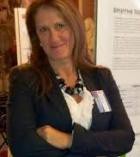
Funzione/Ruolo
Responsabile della linea di ricerca in "Life Science" del MOSE (Molecular Simulation Engineering) di Trieste
Percorso professionale
Dopo la laurea in Chimica presso l'Università di Trieste, nel 1986 ottiene l'abilitazione alla professione. Dal 1986 al 1990 lavora come borsista all'Area Science Park di Trieste e all'Università di Trieste. Dal 1990 al febbraio 2002 è assistente alla docenza presso la Facoltà di Ingegneria dell'Università degli Studi di Trieste. Dal 2002 è professoressa associata di Ingegneria Chimica nella stessa facoltà.
Risultati scientifici
Le attività di ricerca principali sono focalizzate sullo studio, la correlazione e la previsione delle relazioni struttura / proprietà di sistemi molecolari complessi come dendrimeri (macromolecole dotate di una caratteristica struttura ad albero), proteine e trasportatori di farmaci. Nel 2014 Sabrina Pricl, assieme agli altri ricercatori del MOSE (MOlecular Simulation Engineering) di Trieste ed ai colleghi del MD Anderson Cancer Center di Houston, pubblica i risultati dello studio condotto sulla Leucemia Mieloide Cronica (CML). Lo studio ha individuato le dinamiche molecolari responsabili delle resistenze ai farmaci mirati. Si è dimostrato come i pazienti sottoposti alla terapia a lungo termine sviluppassero delle mutazioni di una particolare proteina (BCR-ABL1) che rendevano poco efficace la terapia stessa. Sabrina Pricl e colleghi hanno così fornito informazioni importanti per il trattamento della Leucemia Mieloide Cronica, consentendo non solo la possibilità di formulare una terapia personalizzata per il paziente, ma anche indagando la possibilità di creare principi attivi antagonisti alla mutazione della proteina. Sempre nel 2014, nell'ambito di una ricerca internazionale, Sabrina Pricl e colleghi sviluppano un "nanovettore" capace di trasportare e proteggere piccoli filamenti di RNA che hanno importanti capacità terapeutiche anti tumorali e anti virali. In assenza di questi "nanovettori" i piccoli filamenti di RNA non possono essere utilizzati a scopi terapeutici perché riconosciuti dal sistema immunitario come "esogeni" e quindi distrutti. La scoperta è di assoluta importanza per lo sviluppo di nuove terapie.
Attività editoriali e pubblicazioni
Sabrina Pricl è autrice di numerose pubblicazioni scientifiche nazionali ed internazionali, fra cui:
(2020) Laurini E, Marson D, Aulic S, Fermeglia M, Pricl S. Computational Alanine Scanning and Structural Analysis of the SARS-CoV-2 Spike Protein/Angiotensin-Converting Enzyme 2 Complex. ACS Nano. 2020 Sep 22;14(9):11821-11830. doi: 10.1021/acsnano.0c04674. Epub 2020 Aug 26. PMID: 32833435
(2020) Laurini E, Marson D, Aulic S, Fermeglia A, Pricl S. Computational Mutagenesis at the SARS-CoV-2 Spike Protein/Angiotensin-Converting Enzyme 2 Binding Interface: Comparison with Experimental Evidence. CS Nano. 2021 Mar 18. doi: 10.1021/acsnano.0c10833. Online ahead of print. PMID: 33733740
(2016) Chen C, Posocco P, Liu X, Cheng Q, Laurini E, Zhou J, Liu C, Wang Y, Tang J, Dal Col V, Yu T, Giorgio S, Fermeglia M, Qu F, Liang Z, Rossi JJ, Liu M, Rocchi P, Pricl S, Peng L. Mastering dendrimer self-assembly for efficient siRNA delivery: from conceptual design to in vivo efficient gene silencing. Small, 12:3667-3676.
(2015) Brambilla L, Genini D, Laurini E, Merulla J, Perez L, Fermeglia M, Carbone GM, Pricl S, Catapano CV. Hitting the right spot: Mechanism of action of OPB-31121, a novel and potent inhibitor of the Signal Transducer and Activator of Transcription 3 (STAT3). Molecular Oncology, 9:1194-1206.
(2015) Tuo W, Chao C, Juan L, Cheng L, Posocco P, Xiaoxuan L, Qiang C, Shuaidong H, Zicai L; Fermeglia M, Pricl S, et al. Anticancer drug nanomicelles formed by self-assembling amphiphilic dendrimer to combat cancer drug resistance. Proceedings of The National Academy of Sciences of The United States of America, 112:2978-2983.
(2014) Gibbons DL, Pricl S, Posocco P, Laurini E, Fermeglia M, Sun H, Talpaz M, Donato N. Quintás-Cardama A. Molecular dynamics reveal BCR-ABL1 polymutants as a unique mechanism of resistance to PAN-BCR-ABL1 kinase inhibitor therapy. Proceedings of The National Academy of Sciences of The United States of America, 111:3550-3555.
(2014) Liu X, Zhou J, Yu T, Chen C, Cheng Q, Sengupta K, Huang Y; Li H, Liu C, Wang Y, Posocco P, Wang M, Cui Q, Giorgio S, Fermeglia M, Qu F, Pricl S, et al. Adaptive Amphiphilic Dendrimer-Based Nanoassemblies as Robust and Versatile siRNA Delivery Systems. Angewandte Chemie. International Edition, 53, 11822-11827.
(2012) Posocco P, Gentilini C, Bidoggia S, Pace A, Franchi P, Lucarini M, Fermeglia M, Pricl S, Pasquato L. Self-organization of mixtures of fluorocarbon and hydrocarbon amphiphilic thiolates on the surface of gold nanoparticles. Acs Nano, 6:7243-7253.
(2011) Barnard A, Posocco P, Pricl S, Calderon M, Haag R, Shum WT, Pack WD, Smith DK. Degradable Self-Assembling Dendrons for Gene Delivery - Experimental and Theoretical Insights into the Barriers to Cellular Uptake. Journal Of The American Chemical Society, 133:20288-20300.
(2011) Pierotti M, Tamborini E, Negri T, Pricl S, Pilotti S. Targeted therapy in GIST: in silico modeling for prediction of resistance. Nature Reviews. Clinical Oncology, 8:161-170.
(2009) Negri T, Pavan GM, Virdis E, Greco A, Fermeglia M, Pricl S, Pierotti MA, Pilotti S, Tamborini E. T670X KIT mutations in gastrointestinal stromal tumors: making sense of missense. Journal Of The National Cancer Institute, 101: 194-204.
(2006) Tamborini E, Pricl S, Negri T, Lagonigro MS, Miselli F, Greco A, Gronchi A, Casali P, Ferrone M, Fermeglia M, Pierotti MA, Pilotti S. Functional analyses and Molecular modeling of two c-Kit mutations responsible for Imatinib secondary resistance in GIST patients. Oncogene, 25, 6140-6146.
Riconoscimenti e premi
Sabrina Pricl fa pate delle seguenti società scientifiche: American Chemical Society, The Society of Rheology, Italian Society of Rheology, American Institute of Chemical Engineering, COMSEF (Computational Molecular Science & Engineering Forum), Editorial Board of Carbohydrate Polymers.

Funzione/Ruolo
Professoressa ordinaria di Bioingegneria al Politecnico di Milano
Percorso professionale
Dopo la laurea in Ingegneria Meccanica con indirizzo in Bioingegneria, presso il Politecnico di Milano, nel 2000 consegue il dottorato di ricerca in Bioingegneria presso lo stesso Ateneo, dove prosegue la sua carriera fino a oggi. Nel 2003 fonda l'unità di ricerca in Bioingegneria dislocata presso l'IRCCS Istituto Ortopedico Galeazzi di Milano e la dirige fino al 2008. Nel 2010 fonda il laboratorio di Meccanobiologia del Dipartimento di Chimica, materiali e ingegneria chimica "Giulio Natta", dove dal 2018 è professoressa ordinaria di Bioingegneria. Dal 2013 al 2015 è vice-coordinatrice del programma interdipartimentale di dottorato in Bioingegneria. Nel 2014 fonda e dirige il LuCld lab, laboratorio per l'imaging su cellule viventi. Dal 2015 è la referente del Politecnico di Milano per l'accordo quadro con l'istituto di ricerca farmacologica dell'I.R.C.C.S. Istituto di Ricerche Farmacologiche Mario Negri di Milano.
Risultati scientifici
La sua attività scientifica si concentra sulla bioingegneria, sulla comprensione e il conseguente controllo di meccanismi biologici mediante dispositivi ingegneristici per la coltura di cellule al di fuori dell'organismo umano. Un importante risultato è stato quello di riuscire a orientare la produzione di organoidi (versioni semplificate e miniaturizzate di un organo prodotto in vitro), per esempio tessuto cerebrale o metastasi tumorali ossee, utilizzando dispositivi miniaturizzati detti "bioreattori millifluidici". Manuela Raimondi ha progettato tali sistemi per produrre e mantenere in coltura tessuto vivente da impiegare per la sperimentazione di nuovi farmaci, per esempio chemioterapici e anti-infiammatori, in modo molto più realistico della coltura cellulare convenzionale, riducendo l'impiego di animali da esperimento. Nei suoi studi si è focalizzata sulle cellule "mesenchimali", ovvero cellule staminali del tessuto osseo e cartilagineo, che forniscono la naturale capacità rigenerativa e riparativa ai tessuti del corpo umano. Un importante risultato è stato quello di riuscire a imitare gli stessi legami che mantengono aggregate le cellule nelle nicchie naturali in cui esse abitualmente risiedono nel corpo umano, progettando strutture artificiali di dimensione nanometrica, dette "nicchie ingegnerizzate", alle quali far aderire le cellule in coltura. Questa tecnica di coltura non convenzionale consente di mantenere le proprietà delle cellule staminali in coltura prolungata, senza necessità di somministrare molecole tossiche, accelerando così il trasferimento di queste cellule verso un loro uso clinico come farmaci naturali, in sostituzione dei farmaci anti-infiammatori convenzionali. Lo stesso metodo viene utilizzato per le rigenerazione di organi in vitro.
Attività editoriali e pubblicazioni
È autrice di circa 200 pubblicazioni scientifiche, tra cui:
[2018] Marturano-Kruik A, A.Villasante, K.Yaeger, S. Ambati, A. Chramiec, M.T. Raimondi, G. Vunjak-Novakovic. Biomechanical regulation of drug sensitivity in an engineered model of human tumor. Biomaterials. 2018 Jan;150:150-161. doi: 10.1016/j.biomaterials.2017.10.020
[2018] Marturano-Kruik A, Nava MM, Yaeger K, Chramiec A, Hao L, Robinson ST, Guo XE, Raimondi MT, Vunjak-Novakovic G. Human bone perivascular niche-on-a-chip for studyingmetastatic colonization. Proc Natl Acad Sci U S A. 2018 Feb 6;115(6):1256-1261. doi:10.1073/pnas.1714282115.
[2018] Garcia A, Jacchetti E, Marotta R, Tunesi M, Rodriguez Matas JF, Raimondi MT. The Effect of Cell Morphology on the Permeability of the Nuclear Envelope to Diffusive Factors. Frontiers in Physiology. Published online July 13, 2018. https://doi.org/10.3389/fphys.2018.00925
[2017] Ricci D, Nava MM, Zandrini T, Cerullo G, Raimondi MT, Osellame R. Scaling-Up Techniques for the Nanofabrication of Cell Culture Substrates via Two-Photo Polymerization for Industrial-Scale Expansion of Stem Cells. Materials, 10(1):66. doi: 10.3390/ma10010066
[2016] Tunesi M, Fusco F, Fiordaliso F, Corbelli A, Biella G, Raimondi MT. Optimization of a 3D dynamic culturing system for in vitro modeling of Frontotemporal Neurodegeneration-relevant pathologic features. Frontiers in aging neuroscience. Frontiers in Aging Neuroscience, 8:146. doi: 10.3389/fnagi.2016.00146
[2016] Garcia B, Rodriguez Matas JF, Raimondi MT. Modeling of the mechano-chemical behavior of the nuclear pore complex: current research and perspectives. Integrative Biology, 8(10): 1011-1021 doi: 10.1039/c6ib00153j
[2016] Nava MM, Di Maggio N, Zandrini T, Cerullo G, Osellame R, Martin I, Raimondi MT. Synthetic niche substrates engineered via two-photon laser polymerization for the expansion of human mesenchymal stromal cells. Journal of Tissue Engineering and Regenerative Medicine, doi: 10.1002/term.2187
[2016] Nava MM, Piuma A, Figliuzzi M, Cattaneo I, Bonandrini B, Zandrini T, Cerullo G, Osellame R, Remuzzi A, Raimondi MT. Two-photon polymerized "nichoid" substrates maintain function of pluripotent stem cells when expanded under feeder-free conditions. Stem Cell Research and Therapy, 7:132. doi: 10.1186/s13287-016-0387-z
[2014] Raimondi MT, Nava MM, Eaton SM, Bernasconi S, Vishnubhatla KC, Cerullo G, Osellame R. Optimization of femtosecond laser polymerized structural niches to control mesenchymal stromal cell fate in culture. Micromachines, 5, 341-358; DOI: 10.3390/mi5020341
[2013] Raimondi MT, Eaton SM, Laganà M, Aprile V, Nava MM, Cerullo G, Osellame R. Three-dimensional structural niches engineered via two-photon laser polymerization promote stem cell homing. Acta Biomaterialia, 9(1):4579-84. DOI: 10.1016/j.actbio.2012.08.022
[2012] Laganà M, Raimondi MT. A miniaturized, optically accessible bioreactor for systematic 3D tissue engineering research. Biomedical Microdevices. 14(1):225-234, ISSN 1387-2176, DOI:10.1007/s10544-011-9600-0
Riconoscimenti e premi
Manuela Raimondi ha ricevuto numerosi premi e riconoscimenti, fra cui tre grants ERC:
2000-2001: Young Investigator Award del Politecnico di Milano.
2005-2006 e 2006-2007: Research Award della Fondazione Cariplo.
2006 e 2007: Rocca Award del MIT-Italy program.
2010-2011: Research Award del Ministero dell'Economia e dello Sviluppo Economico.
2011-2012: Young Researcher Award del Politecnico di Milano.
2015-2020: ERC-CoG-2014 Grant award in stem cell mechanobiology, dell'European Research Council, project NICHOID.
2017-2018: ERC-PoC-2016 Grant award in stem cell bioengineering, assegnato dall'European research Council, Brussels, Belgium - project NICHOIDS.
2019-2020 ERC-PoC-2018 Grant award in microfluidic bioengineering, dell’European Research Council, project MOAB.

Funzione/Ruolo
Direttrice Gestione Iniziative e Progetti presso Essity.
Percorso professionale
Dopo la Laura Magistrale in Ingegneria Gestionale conseguita presso l’Università di Pisa, trascorre 7 anni in Procter&Gamble, principalmente nella categoria UK Beauty Care, ricoprendo diversi ruoli di supply chain tra cui Operations, Initiatives e Quality management, in una realtà dinamica e competitiva, maturando una significativa esperienza in gestione della supply chain, project management e sviluppo del prodotto e industrializzazione attraverso i principi di Early Management.
Nel 2013 entra in Essity, nel settore Operational Excellence e Initiatives Management, guidando trasformazioni produttive e di portafoglio ad alto impatto sul business italiano e poi europeo.
Risultati scientifici
Valeria Salvadori è specializzata in principi di Lean Manufacturing (TPM), capacità di coaching, capacità di comunicazione e influenza, conoscenza del business e innovazione di prodotto e gestione dell'industrializzazione.
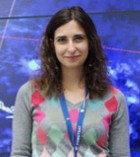
Funzione/Ruolo
LEO Spacecraft Operations Engineer in EUMETSAT, l’agenzia spaziale europea per satelliti meteorologici
Percorso professionale
Stefania Tarquini si laurea presso il Politecnico di Milano in Ingegneria Aerospaziale nel 2010 e in Ignegneria Spaziale nel dicembre 2012, includendo un’esperienza di tesi all’estero di sei mesi alla Pennsylvania State Univeristy negli Stati Uniti.
Durante gli studi, lavora nel suo tempo libero ad un progetto extra-curriculare, il satellite ESMO (European Student Moon Orbiter) gestito dall’Agenzia Spaziale Europea in collaborazione con l’azienda inglese Surrey Satellite Technology Ltd (SSTL). Dopo un anno di lavoro come ingegnera tecnica per il sottosistema propulsivo del satellite, Stefania Tarquini assume il ruolo di Team Leader per il gruppo del Politecnico di Milano, dove gestisce più di dieci persone e, oltre a compiti tecnici per il design del satellite, si occupa di coordinazione delle attività con l’industria.
Dopo la laurea, viene assunta da Telespazio Vega (gruppo Finmeccanica, sezione tedesca) come Spacecraft Controller in EUMETSAT a Darmstadt, in Germania, dove svolge la funzione di operatrice della flotta di satelliti Meteosat e riesce a farsi notare per le sue qualità di ingegnera e manager.
Nel 2015 viene assunta direttamente da EUMETSAT come ingegnera per il satellite Metop, facente parte del programma EUMETSAT Polar System (EPS) portato avanti insieme all’agenzia statunitense NOAA, con la quale EUMETSAT collabora con la distribuzione reciproca dei dati agli utenti e lo scambio di strumenti di rilevamento (europei e americani) per l'imbarco sui rispettivi satelliti.
Nel 2018 Stefania Tarquini si è occupata di coordinare le attività per il lancio di Metop-C, l’ultimo satellite della costellazione Metop, che monta diversi strumenti per il monitoraggio del clima e applicazioni meteorologiche. Il ruolo ha incluso la gestione delle attività di diversi team e la preparazione per le fasi critiche post-lancio di Launch and Early Operation Phase (LEOP), svolto in collaborazione con l’Agenzia Spaziale Europea, e di Spacecraft In-Orbit Verification (SIOV), dove tutti gli strumenti del satellite vengono accesi per la prima volta e testati in orbita.
Dopo il lancio di Metop-C nel Novembre 2018, adesso Stefania Tarquini si occupa delle operazioni dei tre satelliti Metop e lavora come project manager per un altro progetto che include test tecnologici sul Metop-A e si occupa di trovare soluzioni “pulite” per terminarne la vita operativa senza creare detriti spaziali.
Nei prossimi anni Stefania Tarquini si occuperà anche della preparazione delle operazioni per i satelliti di EPS-SG, la seconda generazione di satelliti Metop che verrà lanciata a partire dal 2023.
Risultati scientifici
Durante l’esperienza universitaria di tesi e ricerca, Stefania Tarquini ha lavorato per la selezione di profili innovativi antighiacchio per pale di rotori di elicotteri. Il lavoro ha incluso ricerca e sperimentazione con materiali speciali superidrofobici che sono poi stati testati in una camera a ghiaccio su un vero rotore di elicottero, dando poi vita a diverse pubblicazioni.
Attraverso il progetto ESMO Stefania Tarquini ha acquisito molte conoscenze del sottosistema propulsivo di satelliti a propulsione liquida e durante la laurea triennale ha lavorato anche alla ricerca di materiali innovativi per propellenti solidi e ibridi.
Le principali aree di espezienza adesso sono nel campo delle operazioni spaziali per satelliti in orbita bassa (LEO) e nello specifico sui sotto-sistemi di controllo d’assetto, potenza e controllo di temperatura, dove Stefania Tarquini svolge sia un ruolo tecnico che di coordinazione delle attività con l’industria, Airbus France.
Dal momento che i satelliti Metop possono essere comandati solo per una decina di minuti ogni 101 minuti, una delle aree di forza è la veloce risoluzione di problemi in caso di anomalie e sinergia con altri membri del team.
Dopo aver acquisito la certificazione PRINCE2 a Londra in Project Management, Stefania Tarquini adesso si specializza anche della gestione e pianificazione di progetti e nello specifico per il progetto sulla fine della vita operativa del satellite Metop-A.
Attività editoriali e pubblicazioni
[2018] S. Tarquini,”Planning an End-Of-Life Technology Test Campaign for the Metop-A satellite”, Proceeding of SpaceOps Conference 2018, Marseille.
[2014] S. Tarquini, C. Antonini, A. Amirfazli, M. Marengo & J. Palacios, “Investigation of Ice Shedding Properties of Superhydrophobic Coatings on Helicopter Blades”, Cold Regions Science&Technology, 100, 50–58.
[2013] S. Tarquini, Carlo Antonini, A. Amirfazli, J. Palacios, M. Marengo, “Assessing Icephobicity Of Superhydrophobic Surfaces As Passive Coating Icing Mitigation Strategy On Helicopter Blades”, Proceeding of ILASS 2013, Chania, Crete, 1-4 September 2013.
[2012] S. Tarquini, L. Ferrario, A. Devereaux, L. Rossettini, “Design and Development of a Dual Mode Bipropellant Propulsion System for the European Student Moon Orbiter”, Proceeding of 3AF-ESA-CNES Space Propulsion 2012, Bordeaux, 7-10 May 2012.
Riconoscimenti e premi
Premio “PoMiLIA-61” per la miglior tesi di laurea del 2012 sull’argomento di soluzioni innovative per il risparmio energetico nel settore aerospaziale (Luglio 2013).



